Monday, 2022-07-04
Let me share with you about our vegetable business that started as a hobby. My wife is always passionate about gardening. She has a "cold hand," which means anything she plants will grow. Every unused space that gets sunlight in our home will be full of plants.
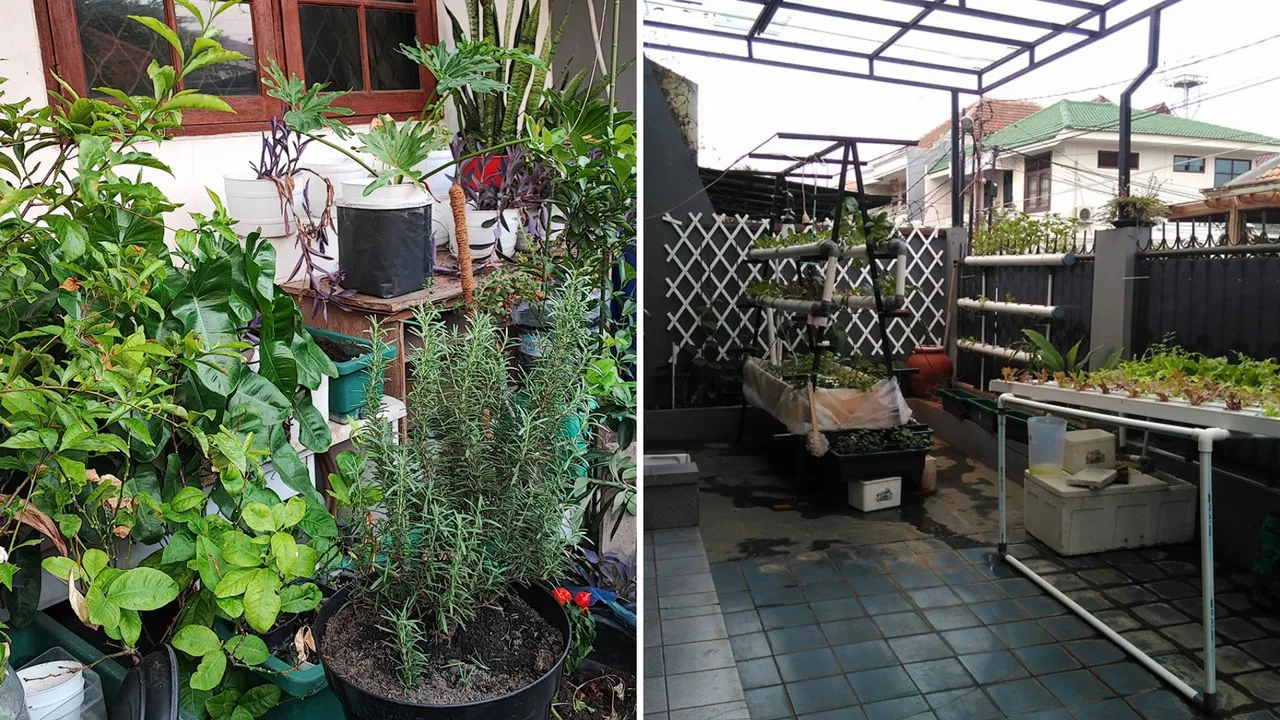
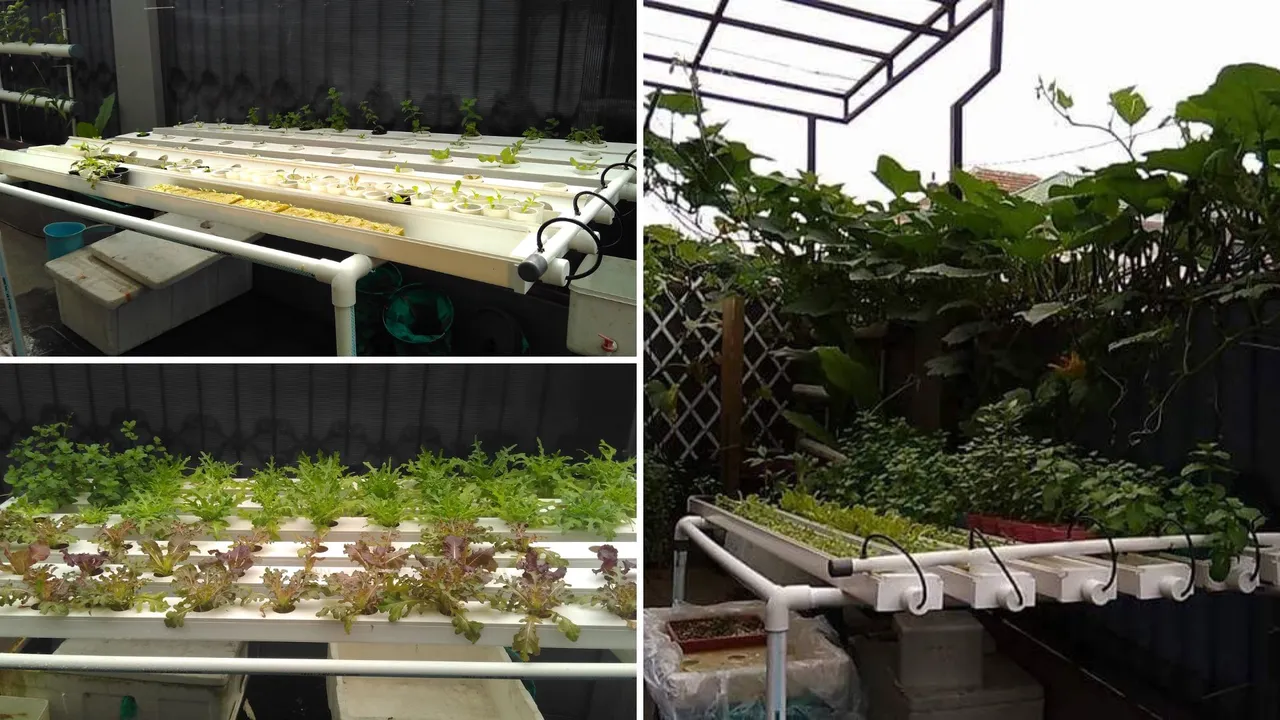
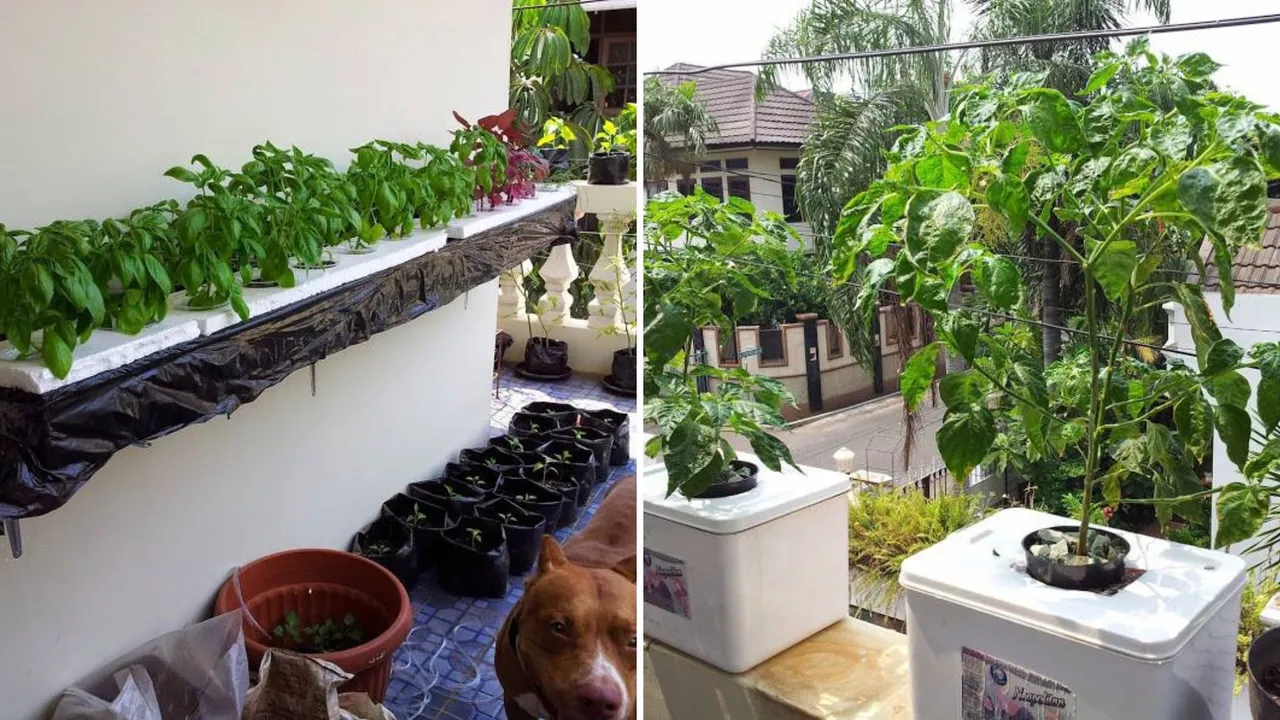

All sorts of hydroponic systems in our front yard and balcony. My house always looks greener than the neighbors'.
We have a small vegetable and herb garden in front and at the back of our house. The problem with conventional growing using soil is the need to water the plants every day. What happens when you have to go for a holiday for a week, and no one is at home to water the plants? This was the primary reason why my wife sought an alternative and a solution.
HYDROPONICS
Growing hydroponically has many advantages compared to the conventional way of using soil as the growing media. If you have never heard of or are unfamiliar with the term hydroponic, it refers to growing plants without soil. The word "hydroponic" in Latin means "working water" instead of using soil, the plant roots grow in mineral nutrient solution in a water solvent.
Advantages of hydroponic systems:
- More efficient use of water.
- Higher yield (grow vertically) in the same amount of space.
- Faster harvest time.
- Bigger and better quality of produce.
- Cleaner – don't have to deal with microbes, worms, and other soil-borne diseases.
- More control of nutrients and environment (indoor).
There are 6 main types of hydroponic systems:
- Wick System (the easiest)
- NFT (Nutrient Film Technique)
- DWC (Deep Water Culture)
- Ebb & Flow ( Flow & Drain)
- Drip System
- Aeroponics (advanced)
If you are interested in getting hands-on with hydroponics, start with the wick system and explore other systems I mentioned above. There are plenty of good tutorials on YouTube, blogs, and communities where we learned hydroponics from.
THE NUTRIENTS
Every plant root systems need 3 important things: oxygen, water, and nutrients. What differs in the 6 types of hydroponic systems I mentioned above is the way each system delivers these 3 important things to plant roots.
Plants require nutrients to grow. In the traditional way of farming, the soil provides all the nutrients needed by the plants. In a hydroponic system, we have full control of the plants' nutrient intake. This means that we have to provide every nutrient elements that the plants need to grow.
In Indonesia, hydroponics nutrient in granule form is easy to find. They are called AB Mix and each package consists of 2 blends each weighing about 1 kg. You need two 5-liter containers to dissolve each blend separately with 5 liters of water to make the stock nutrient solution.

Left: AB Mix package in granule form comes in 2 blends, mix A and B weighing about 1 kg each. Dissolve with water separately to make the stock nutrient solution.
Right: All-in-one EC/pH meter and pH buffer powder for calibration purposes.
MEASURING TOOLS
In hydroponics, you need to have measuring tools. You need to measure both your water pH and the concentration level of your nutrient solution using an EC/TDS meter. A good pH range for plants to grow is between 5.5 - 6.8.
EC = Electrical Conductivity
TDS = Total Dissolved Solids
THE LEARNING PROCESS & EXPERIMENT
It all began in 2014 when my wife started experimenting with hydroponics. She began testing new grow media like cocopeat (fiber extracted from the outer husk of the coconut), roasted rice hulls, Rockwool, hydroton (clay pebbles), perlite, and any media except soils that have a high level of water absorption and retention.
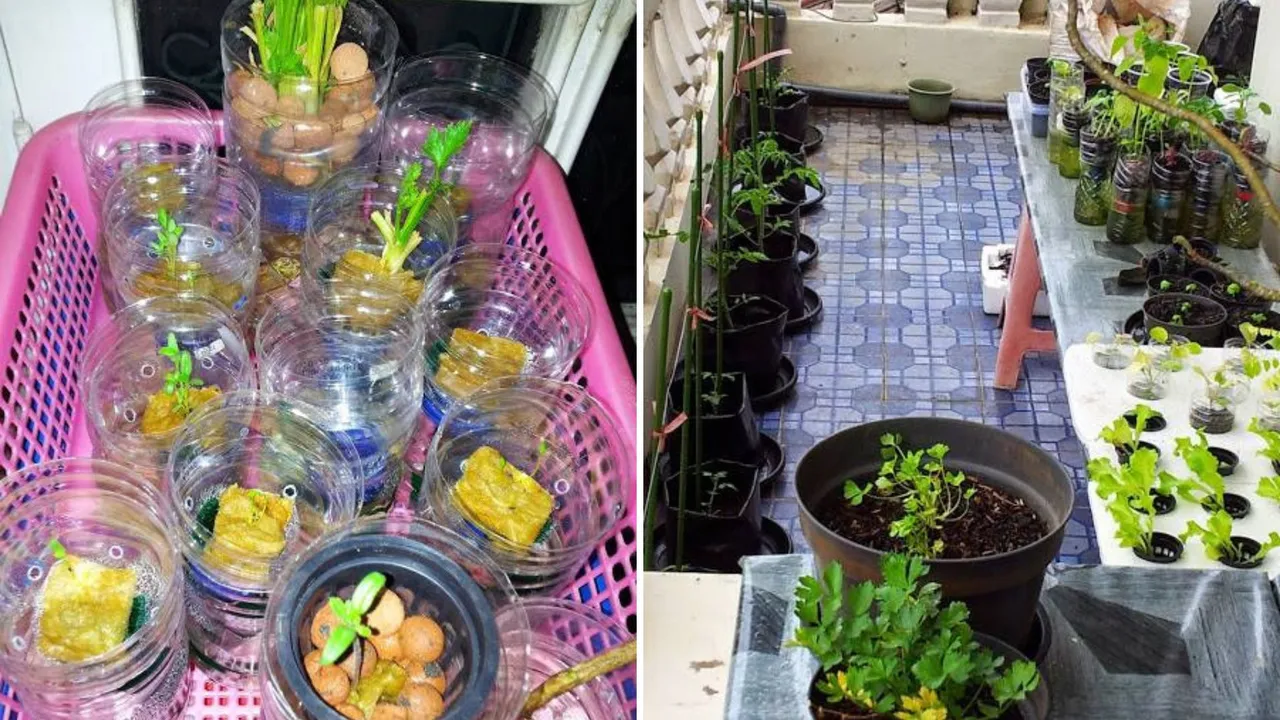
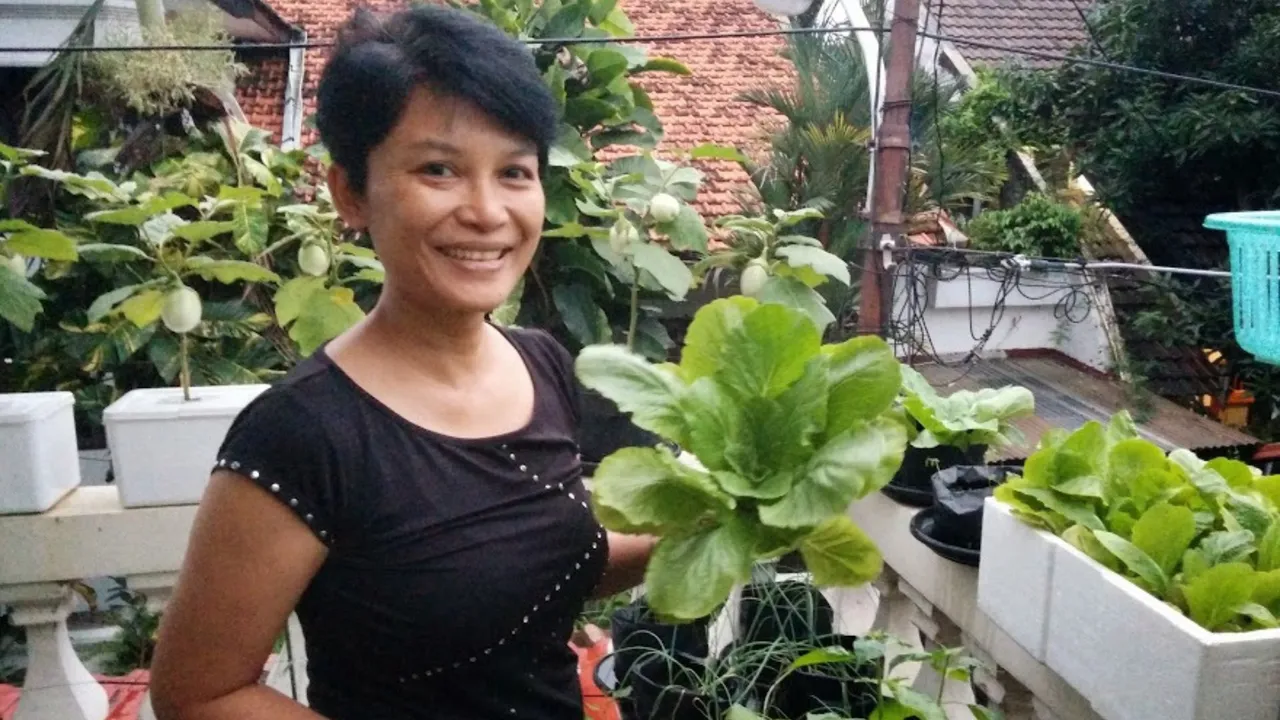
Experiment with grow media and the wick system in the balcony. The wick system is easy to implement and gives a good yield. Easy-peasy!
She built simple wick systems using styrofoam boxes, ice cream boxes, and any containers she could find. She planted all sorts of vegetables like water spinach, bok choy, Chinese cabbage, tomato, basil, etc. They all grew and thrived.
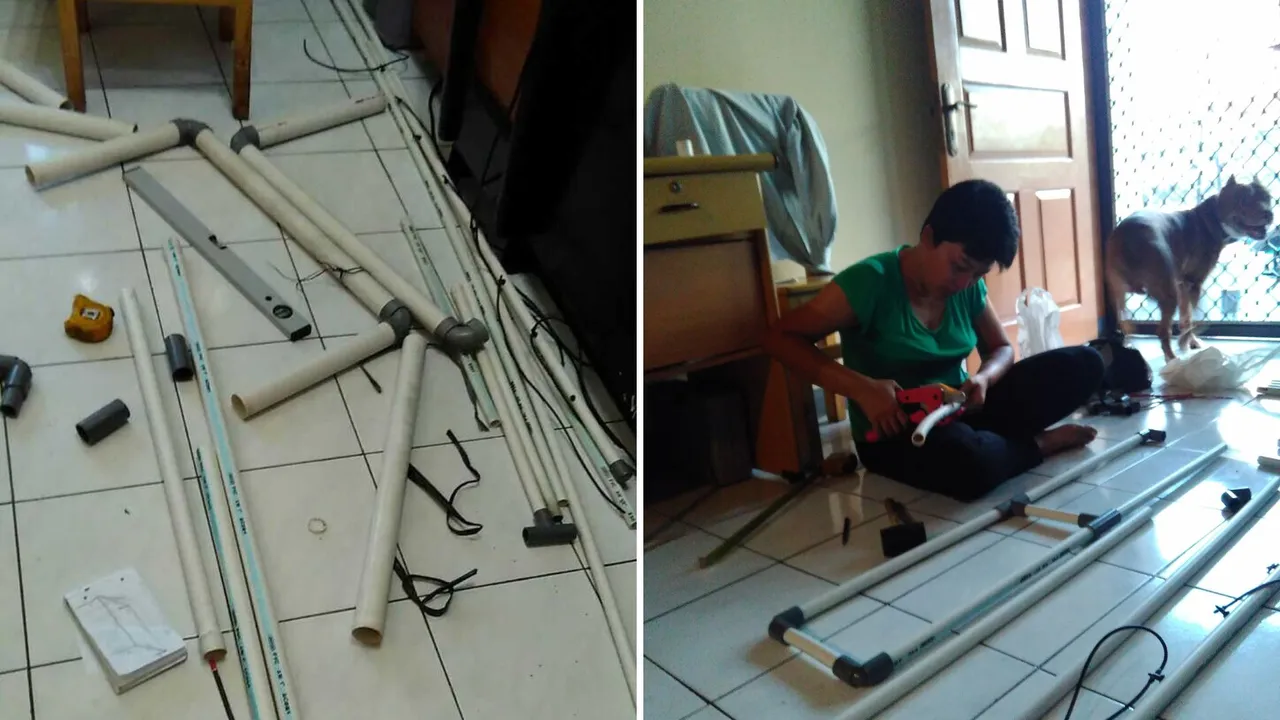
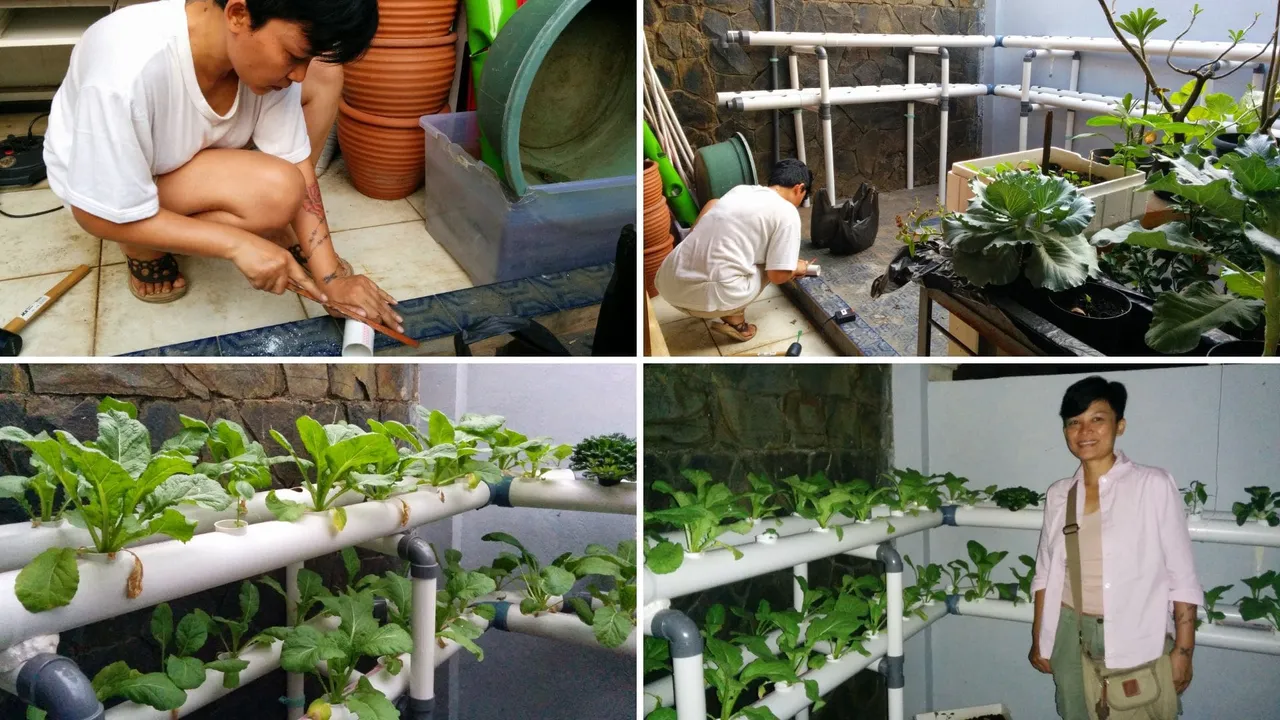
Ready to tackle a more advanced system, DFT (Deep Flow Technique), a modified NFT (Nutrient Film Technique) by using PVC pipes.
She started to join hydroponics communities on Facebook and actively posted pictures of her experiments and accomplishment. She also attended several local meet-ups and exhibitions and slowly built her networks. This was the beginning of her journey, from a hobby becoming a new business.
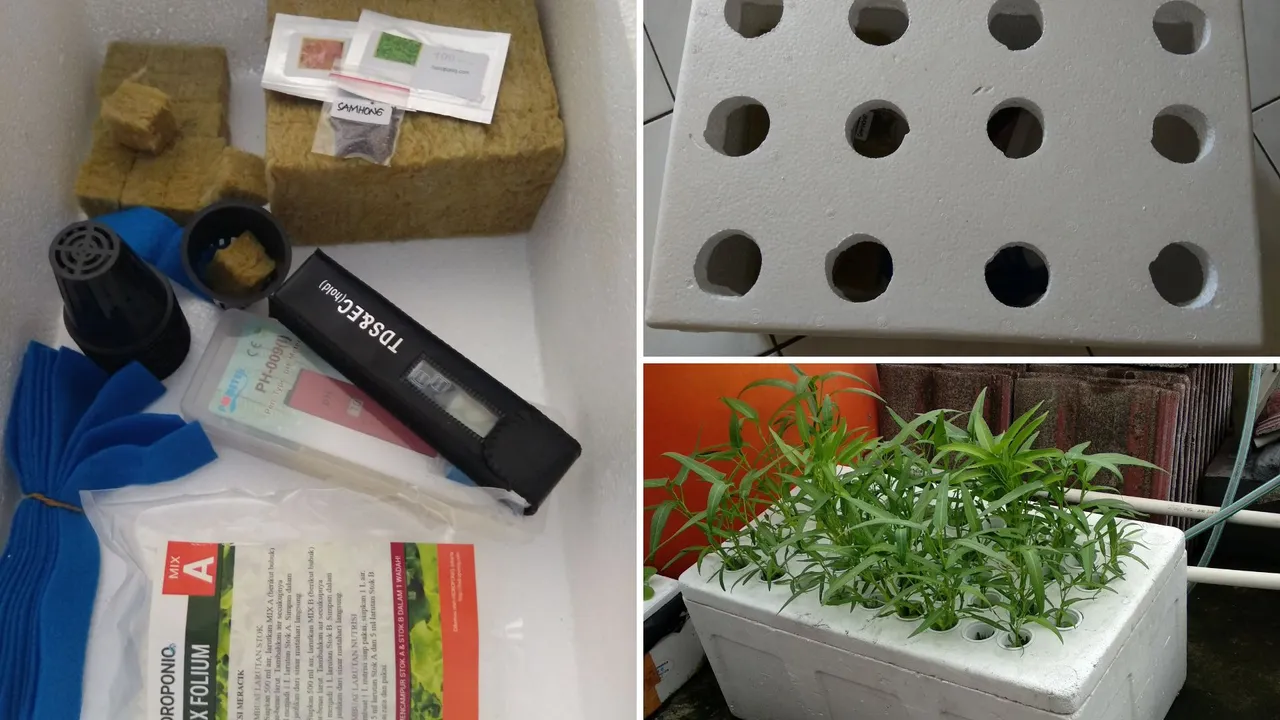
Selling hydroponic starter kits for beginners thru Facebook and WhatsApp groups. Starter kits consist of a 12-hole styrofoam box, Rockwool grow media, 12 net pots, wick, EC/TDS meter, pH meter, 3 kinds of seeds, and ABMix sachet (1-liter stock).
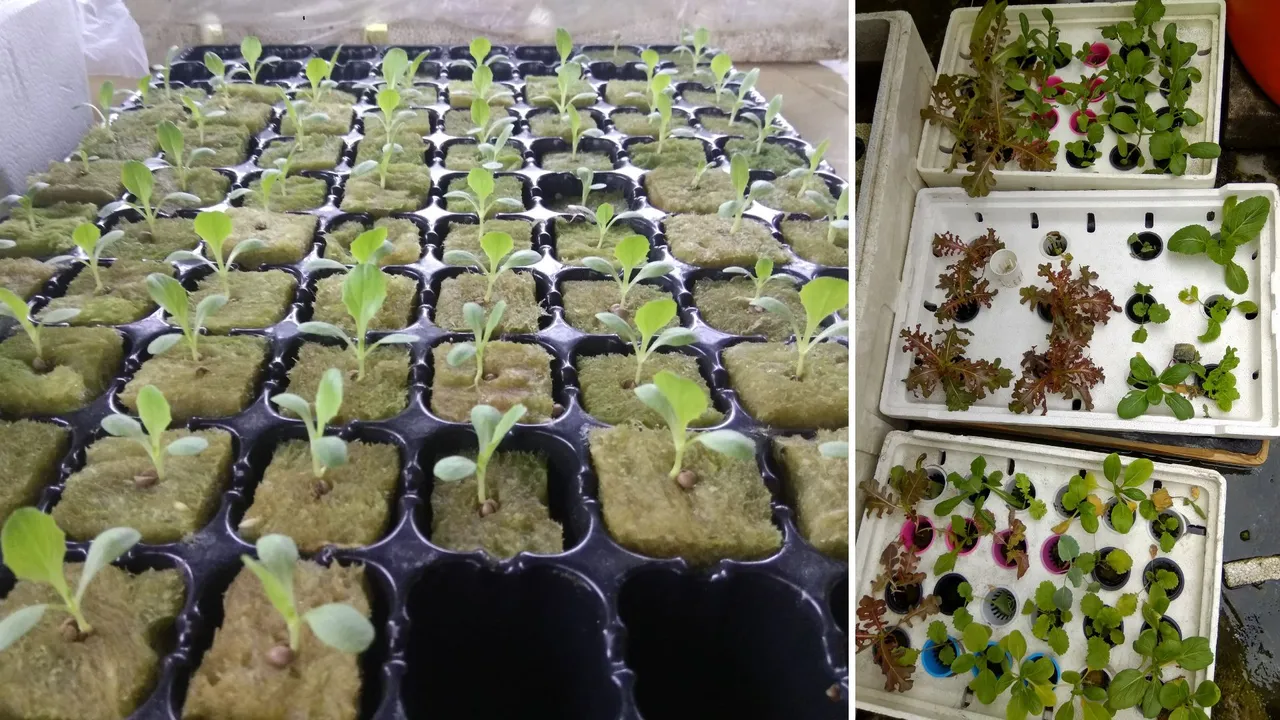
Using Rockwool as grow media to start seedlings and plants using wick systems in styrofoam boxes.
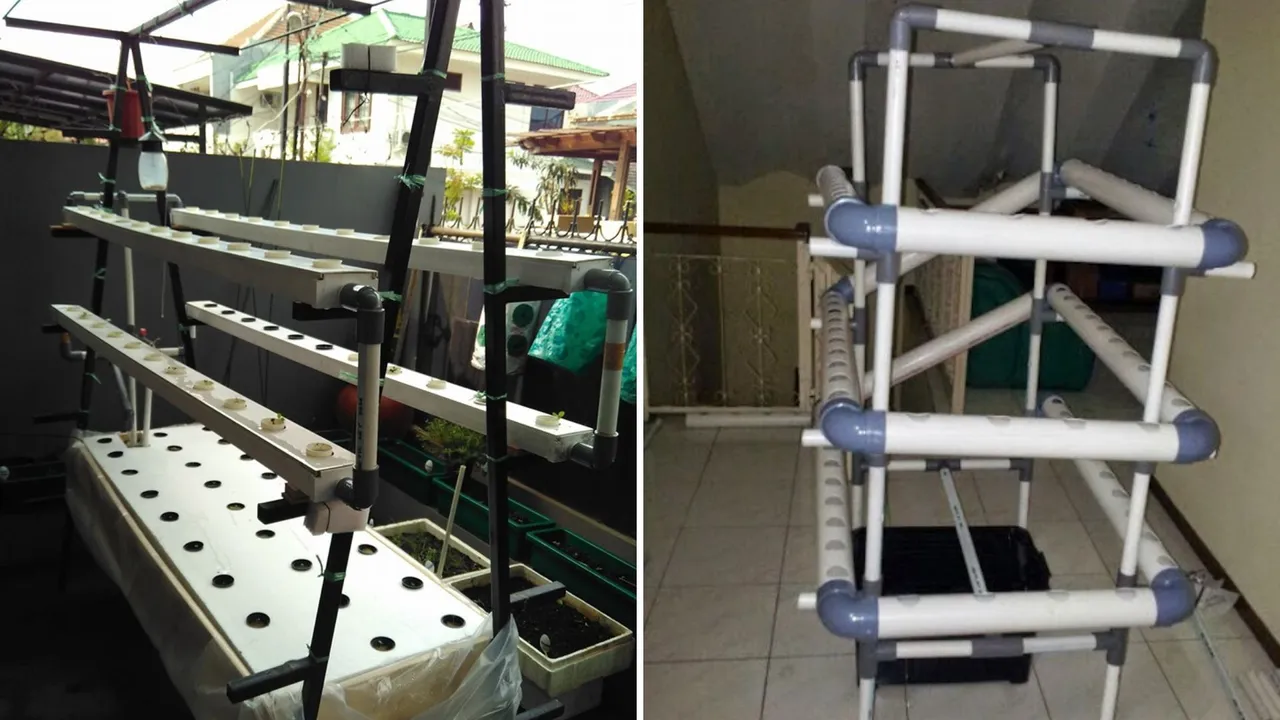
Left: A-frame NFT system combined with DWC (Deep Water Culture) underneath.
Right: First commercial order of DFT system using PVC pipes.
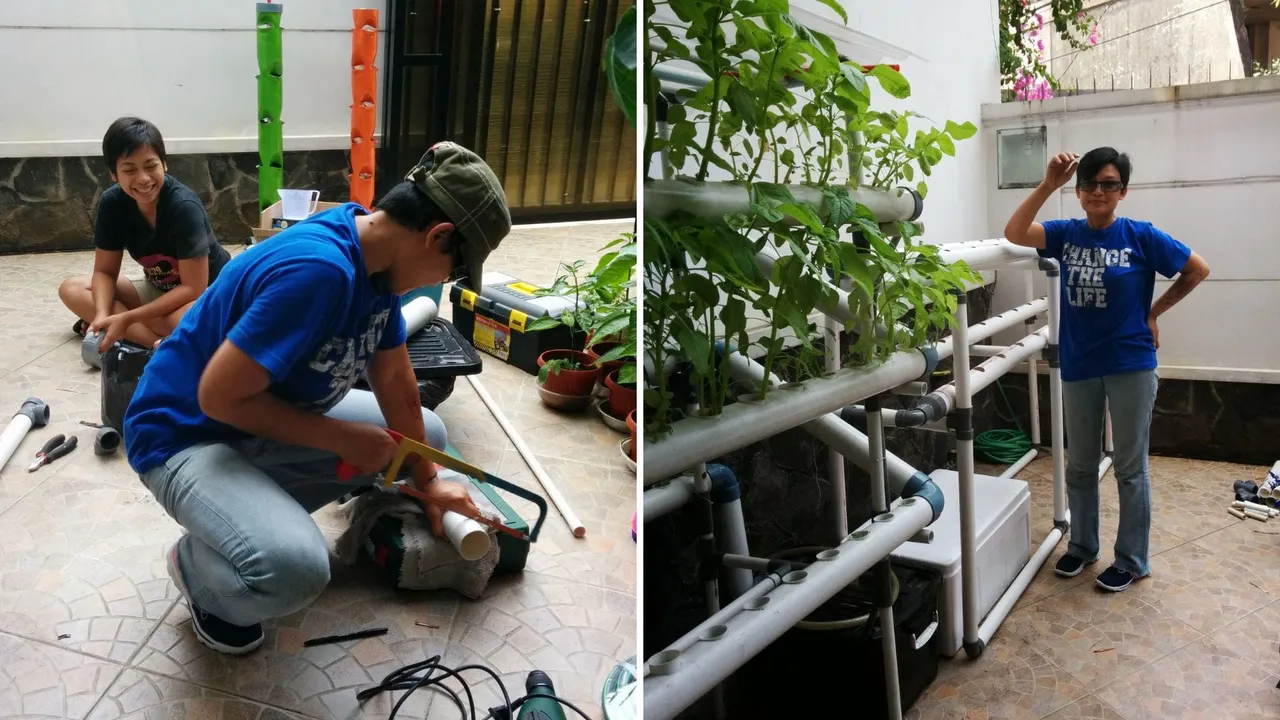
First DFT system installation at the first client's house.
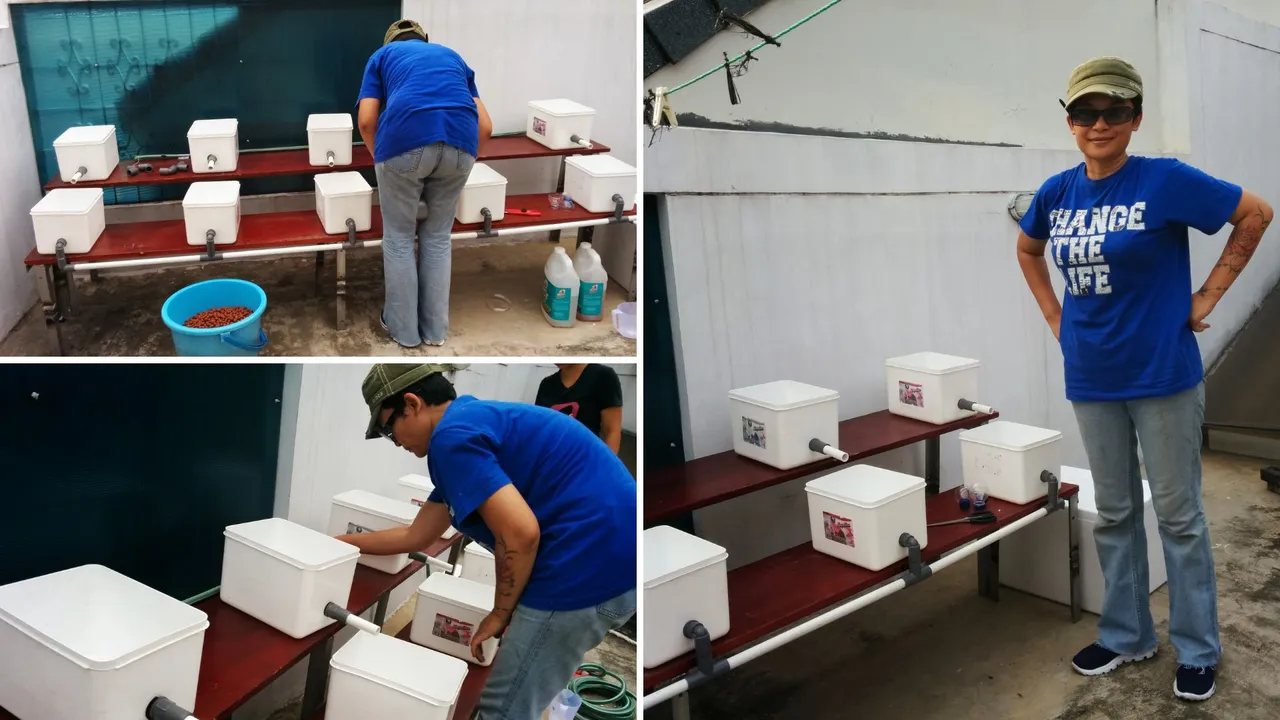
Install Dutch bucket system for tomatoes.
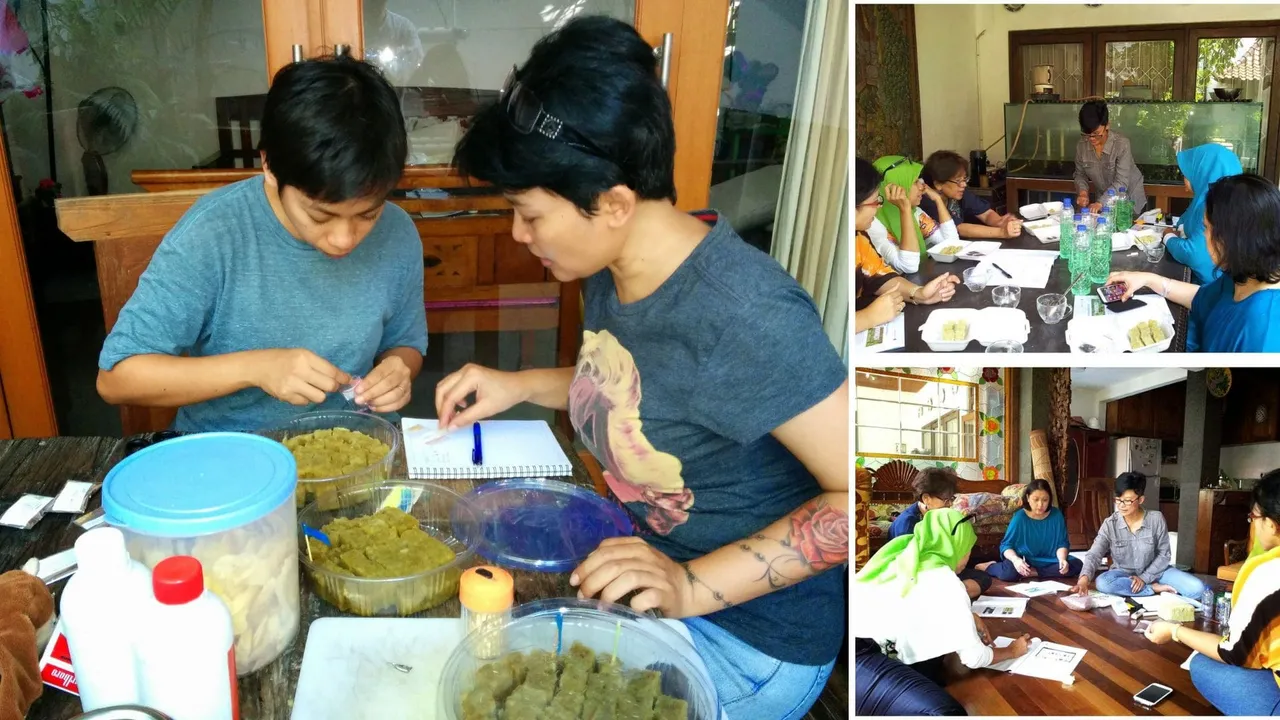
Private and group hands-on training.
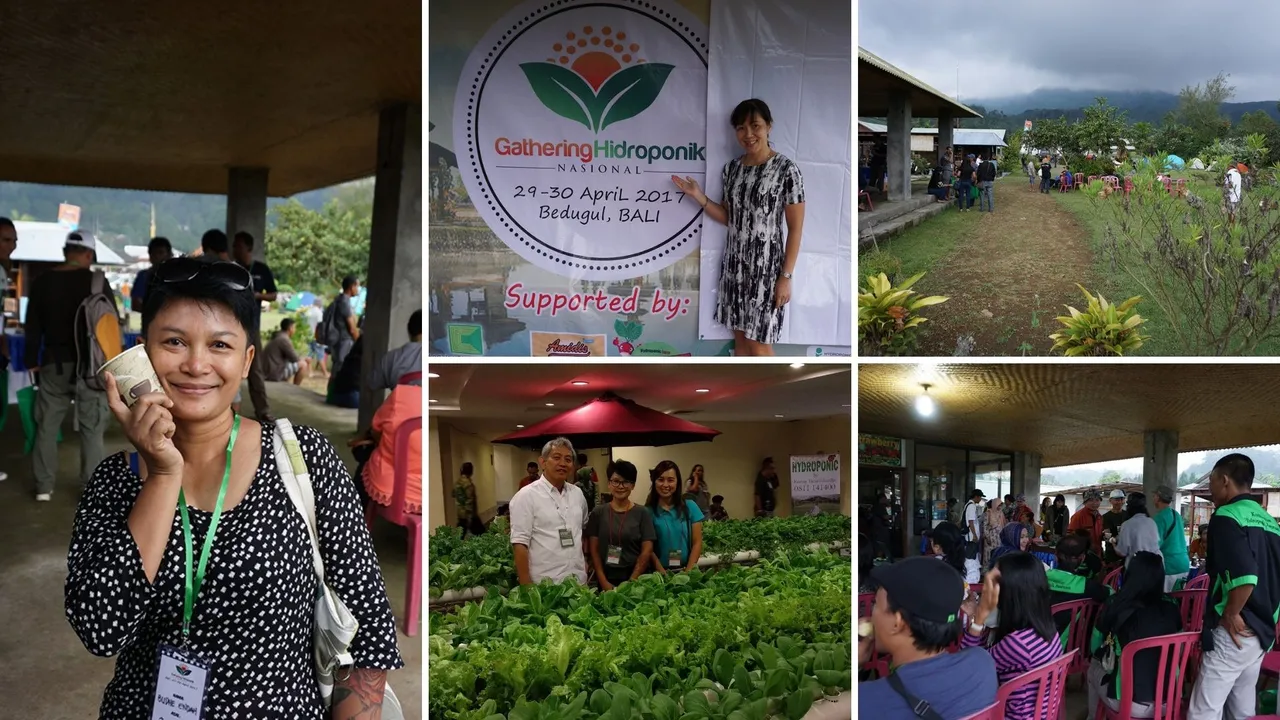
Attending hydroponics exhibition and gathering in Bali.
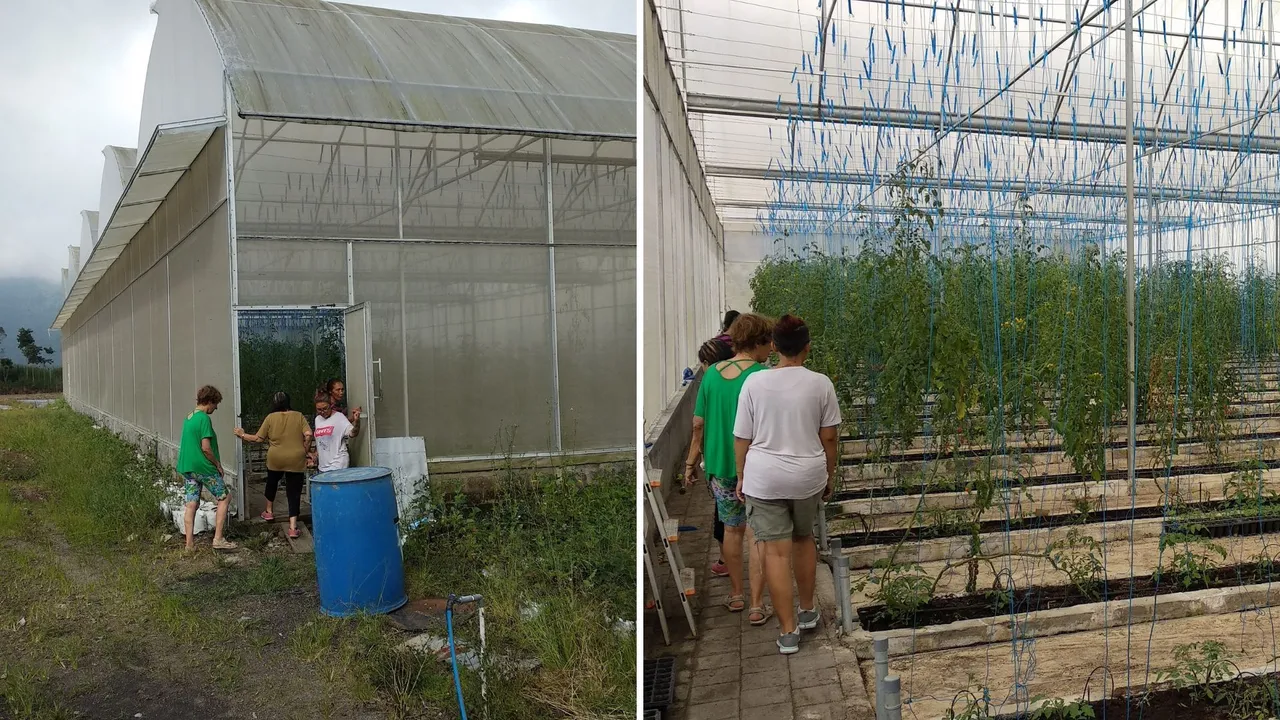
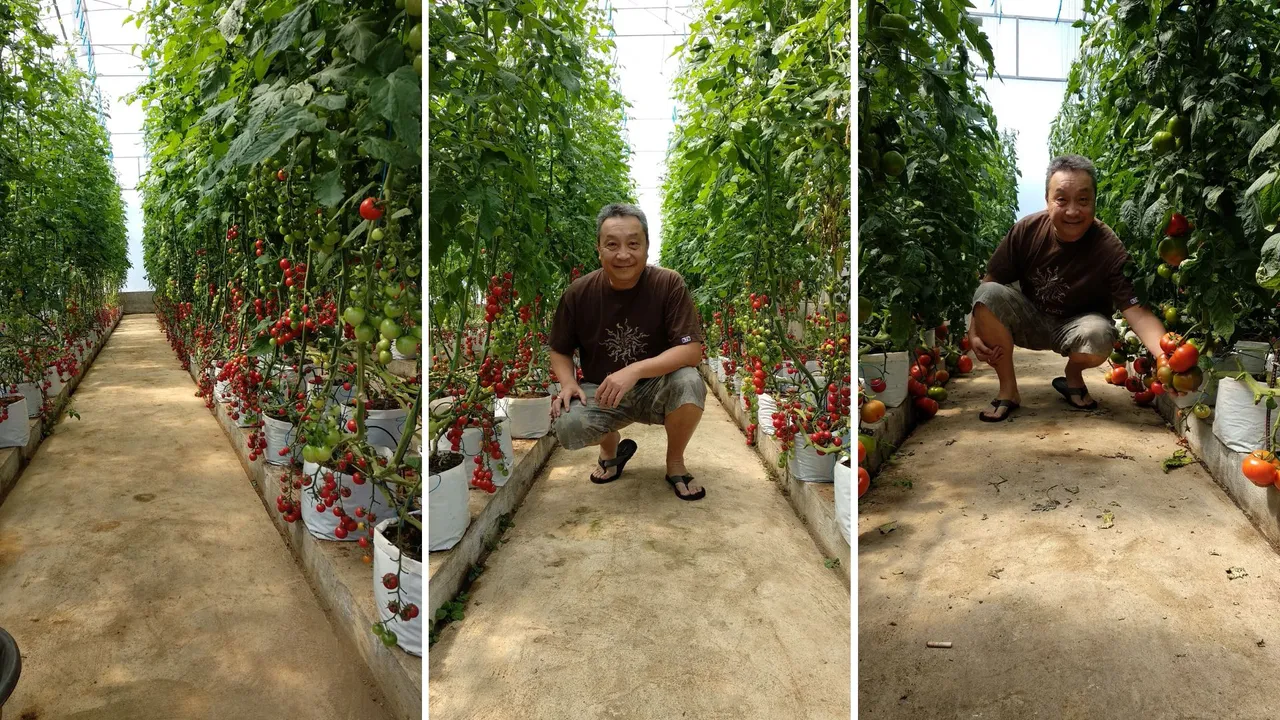
Visiting friend's greenhouse (cherry and beefsteak tomatoes) in Bedugul, Bali.
THE GREENHOUSE
In 2017 we were thinking about building a small greenhouse, and we were lucky. A good friend offered us (for free) the extra space on his 500-meter2 property strategically located in the city. The location is about 4 km from where we live. We shared half of the property with my friend's furniture workshop and built a 16-meter x 12-meter (192 m2 total) greenhouse.
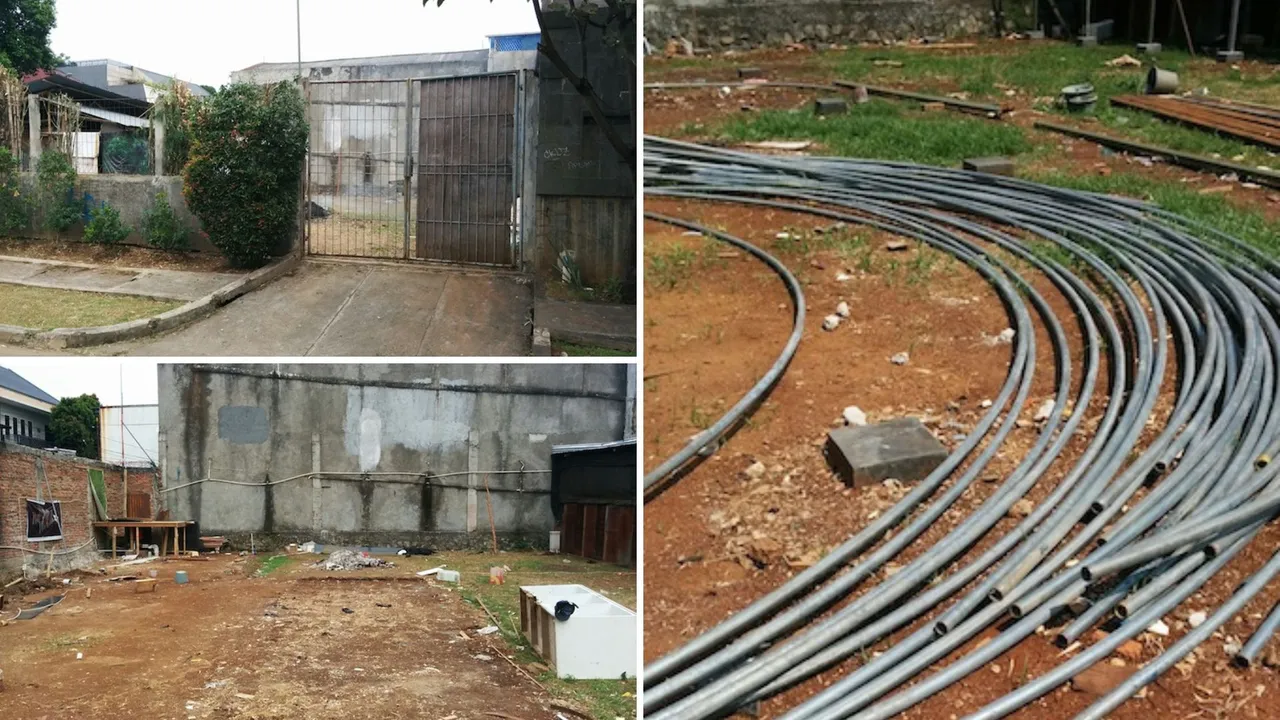
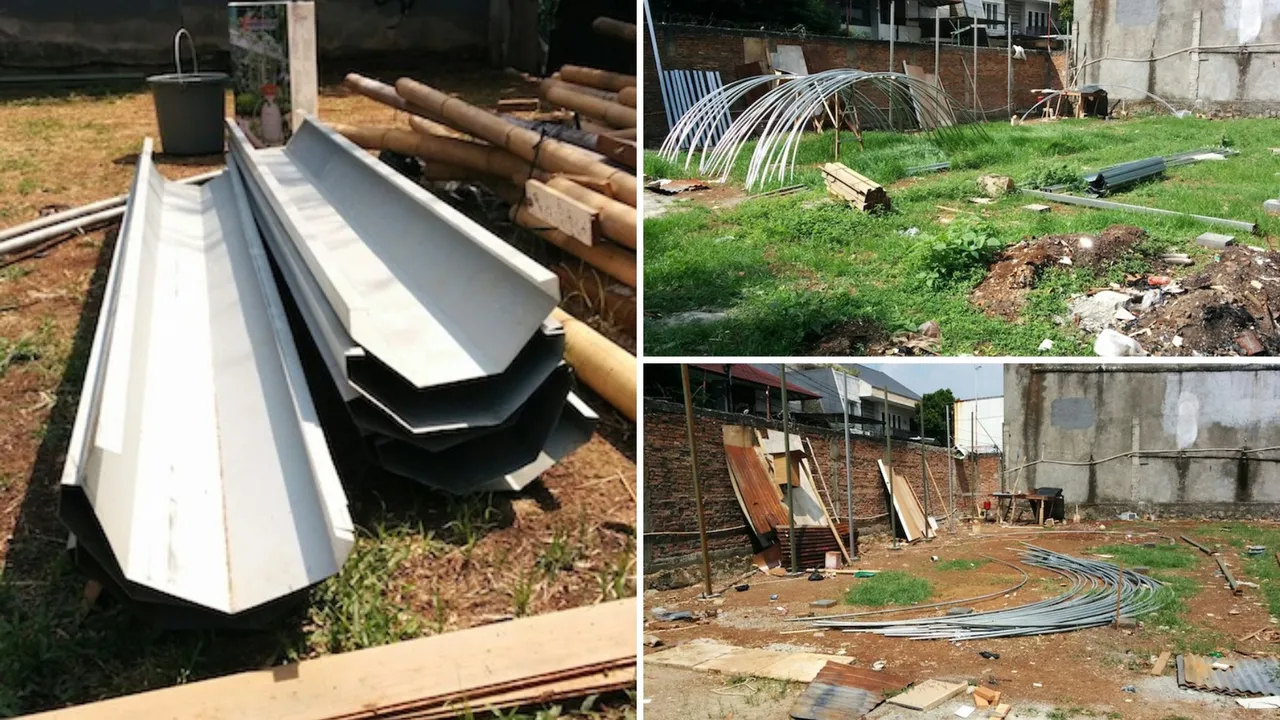
The strategic location in the middle of the city and materials preparation to build a greenhouse.
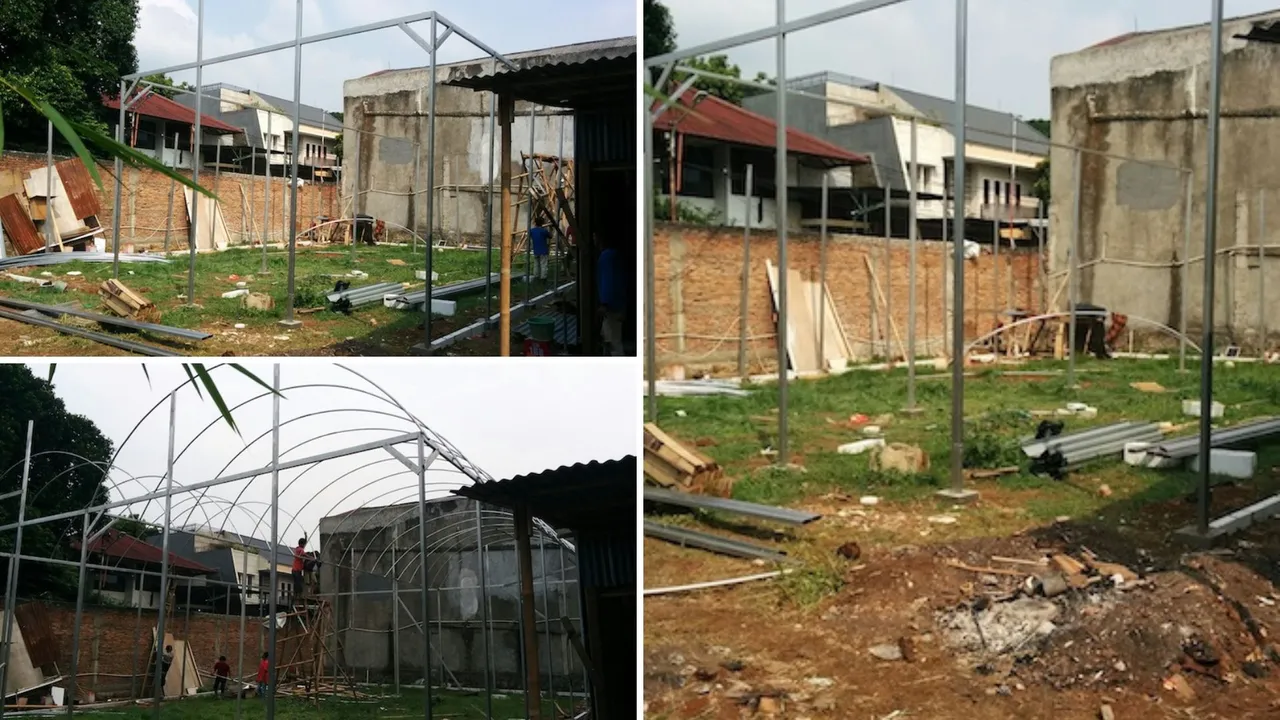
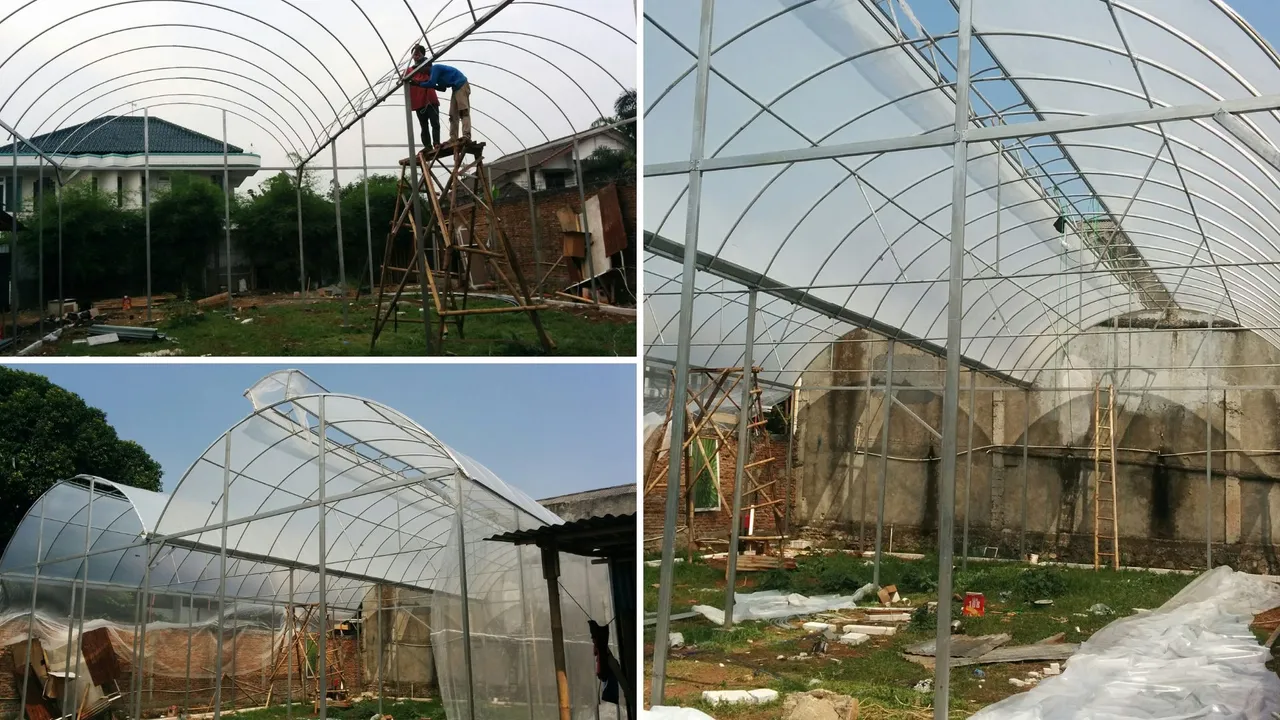
Greenhouse progress and UV plastic installation for the roof.

Insect/screen net installation.
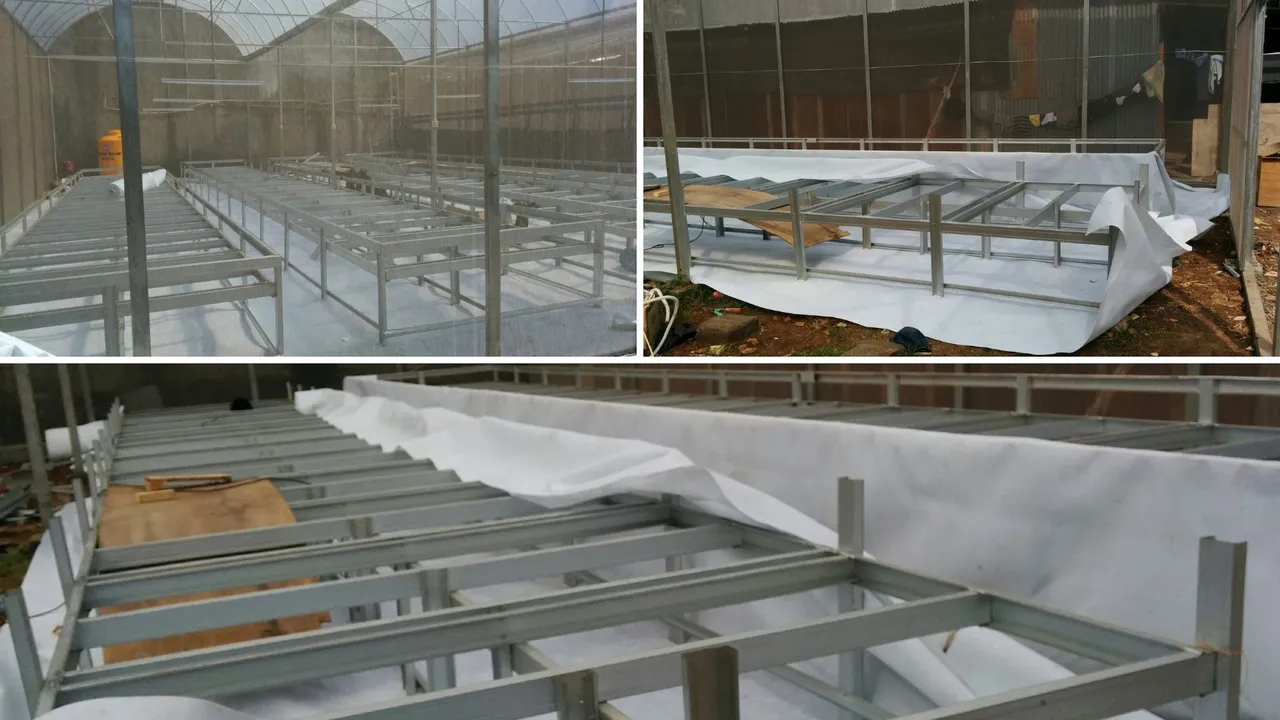
Install light steel frames and geotextile on the floor to prevent weeds from spreading and clean-look environment.
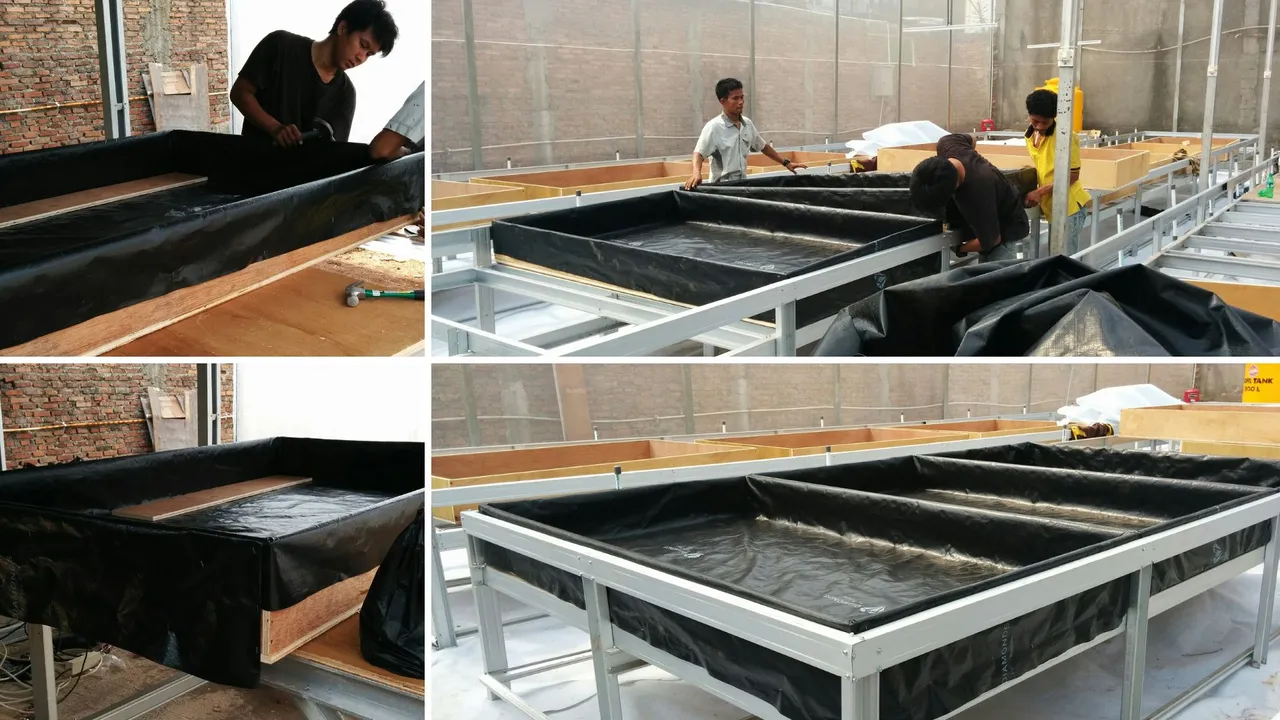
47 pieces of 1-meter by 2-meter grow beds covered with tarpaulin.
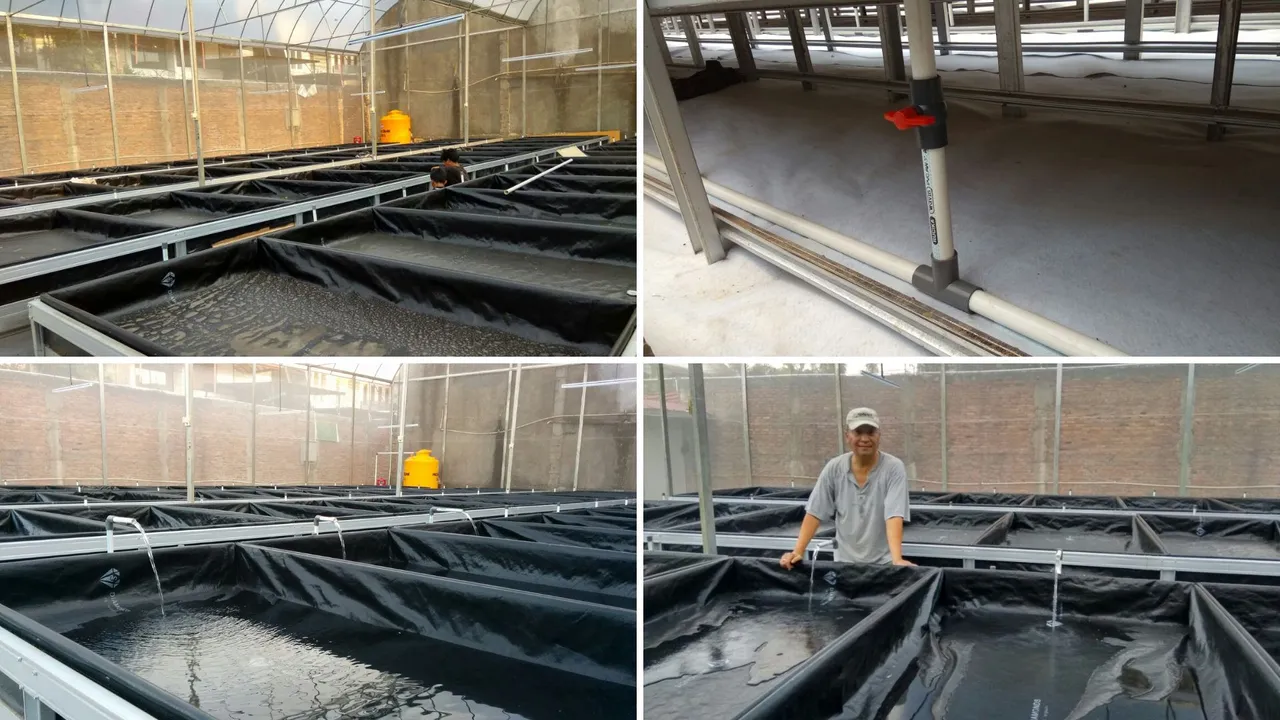
Water intake and drain pipes testing.
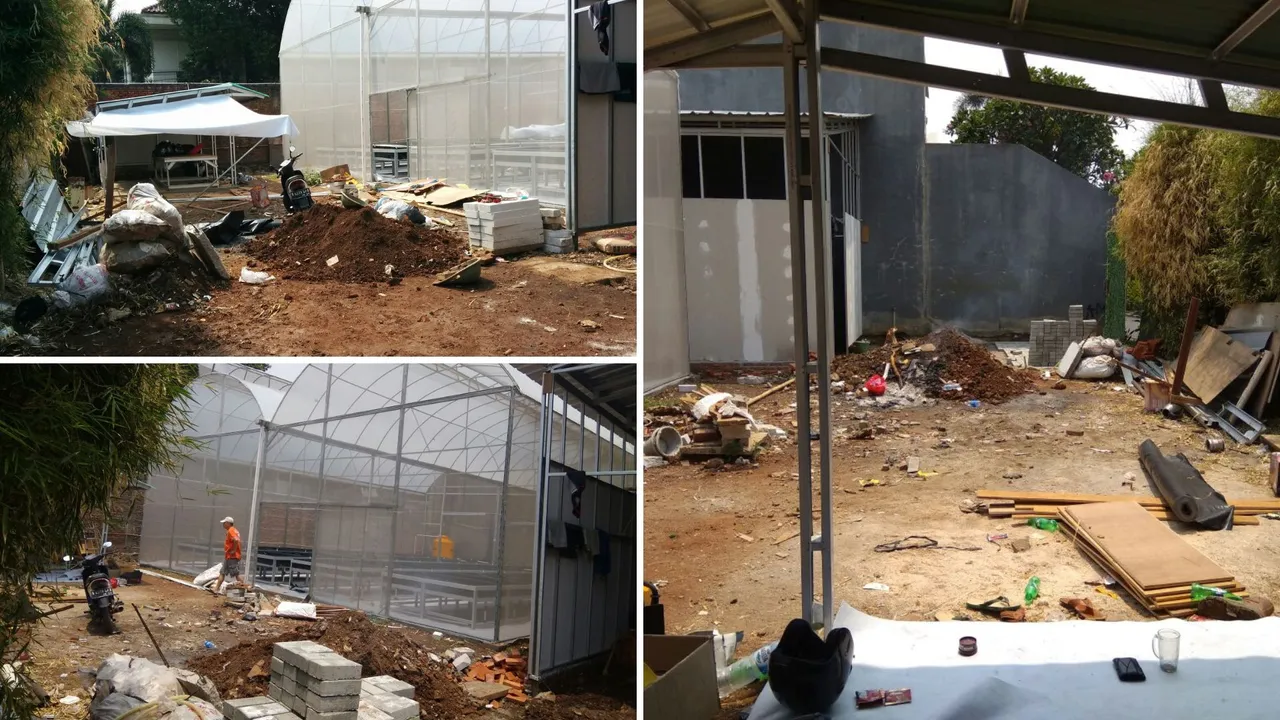
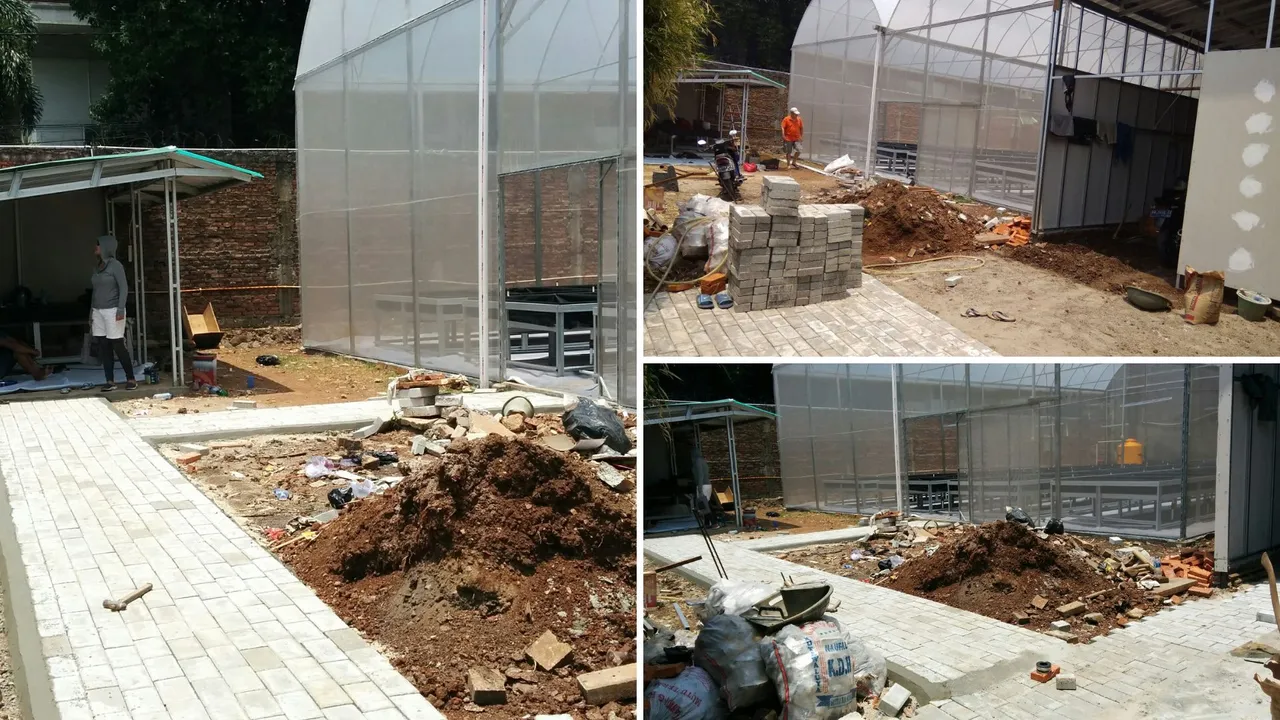
Cleaning and tidying up the greenhouse's outer area.
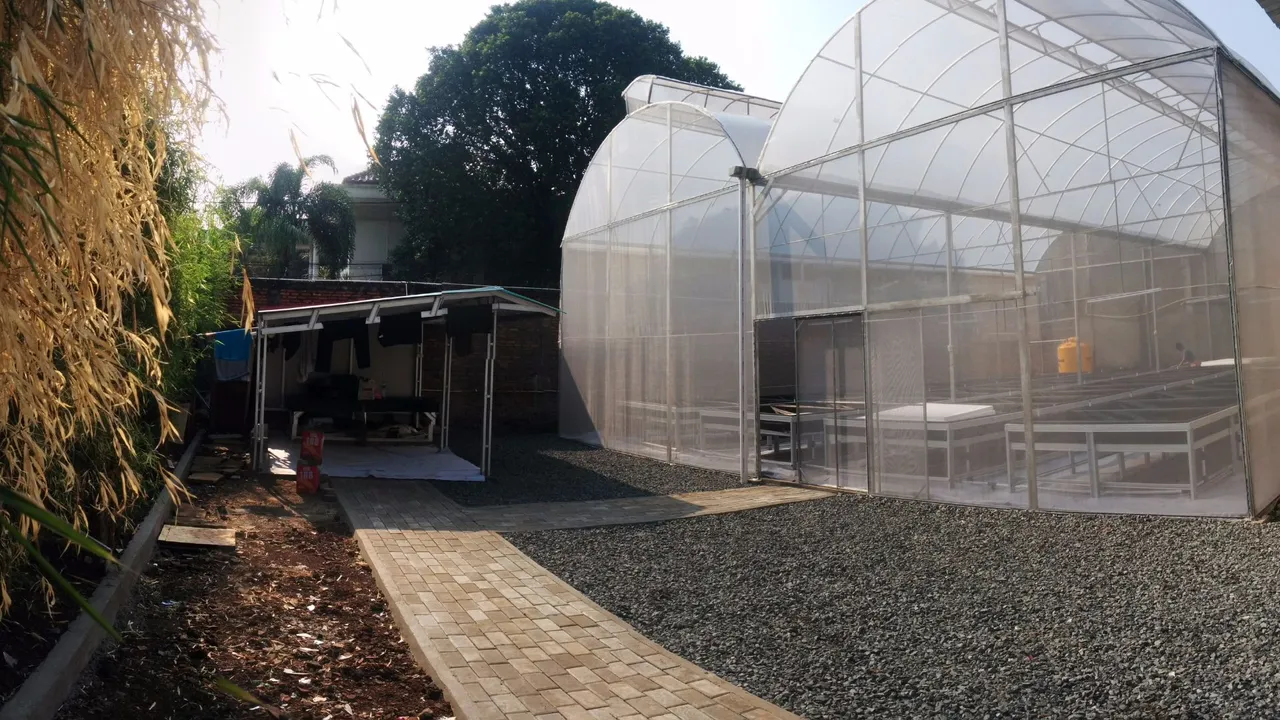
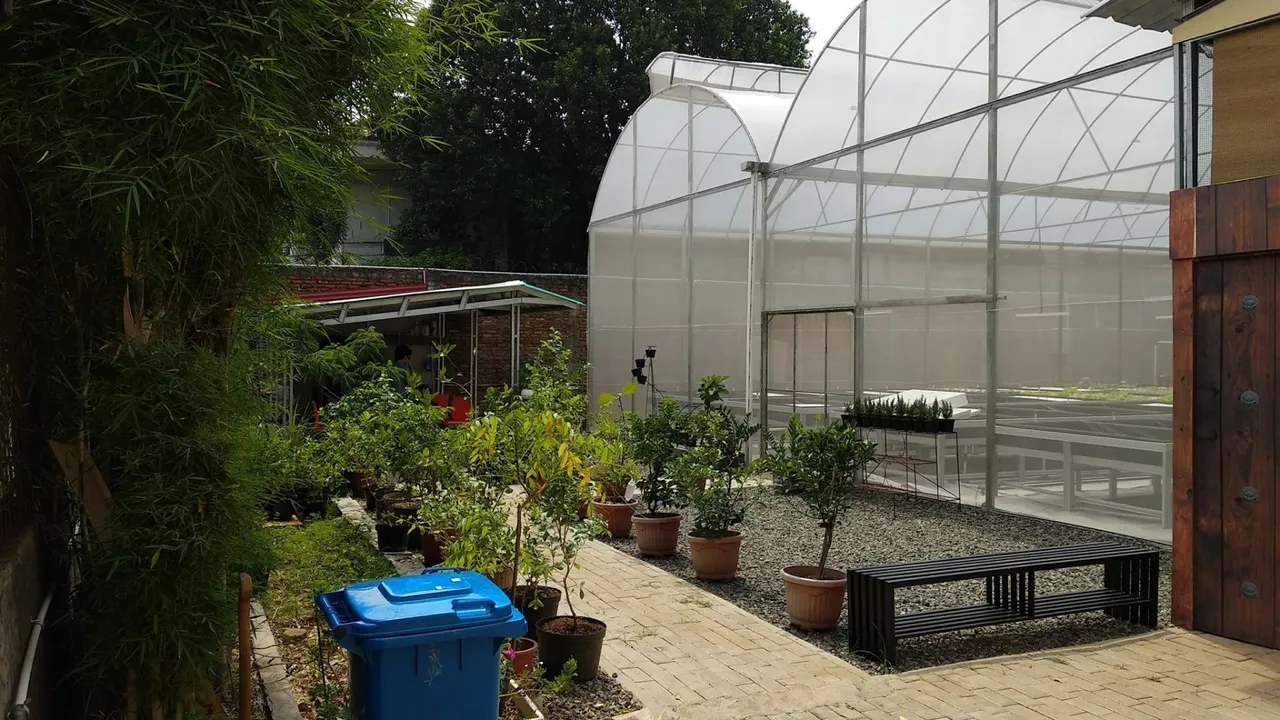
All good and ready to plant!
PLANT, GROW & HARVEST
In the beginning, we grew various kinds of vegetables to test how well they grow in the low lands and under the heat of Jakarta's weather. Our problem was the temperature of the nutrients in the water solvent. Some vegetables can't grow optimally when the water is too warm. After a few trials and errors and a better understanding of the market demand, we decided to concentrate on just a few vegetables. Curly Kale (Brassica oleracea), Basil (Basilius), Thai Basil (Ocimum basilicum), and Mint (Mentha) thrived and had a high demand.
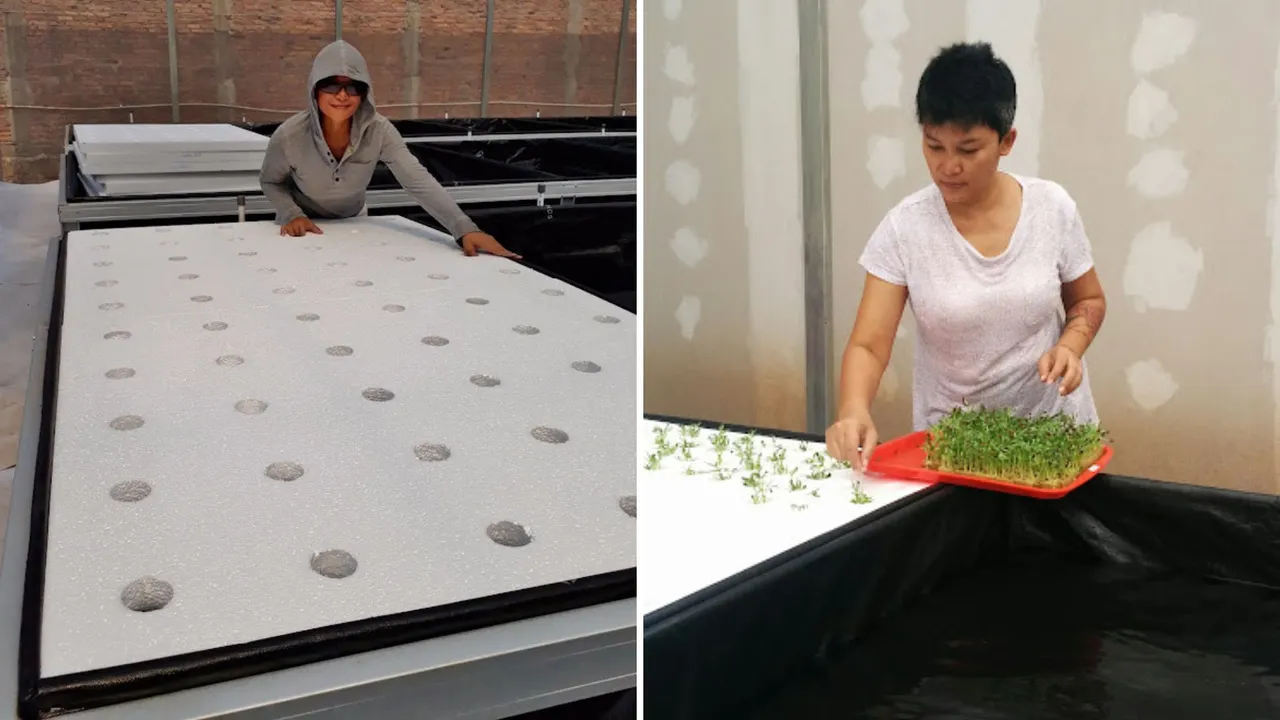
Start planting seedlings.

Top: Bibb Lettuce
Bottom Left: Kangkoong (water spinach)
Bottom Right: Romaine Lettuce
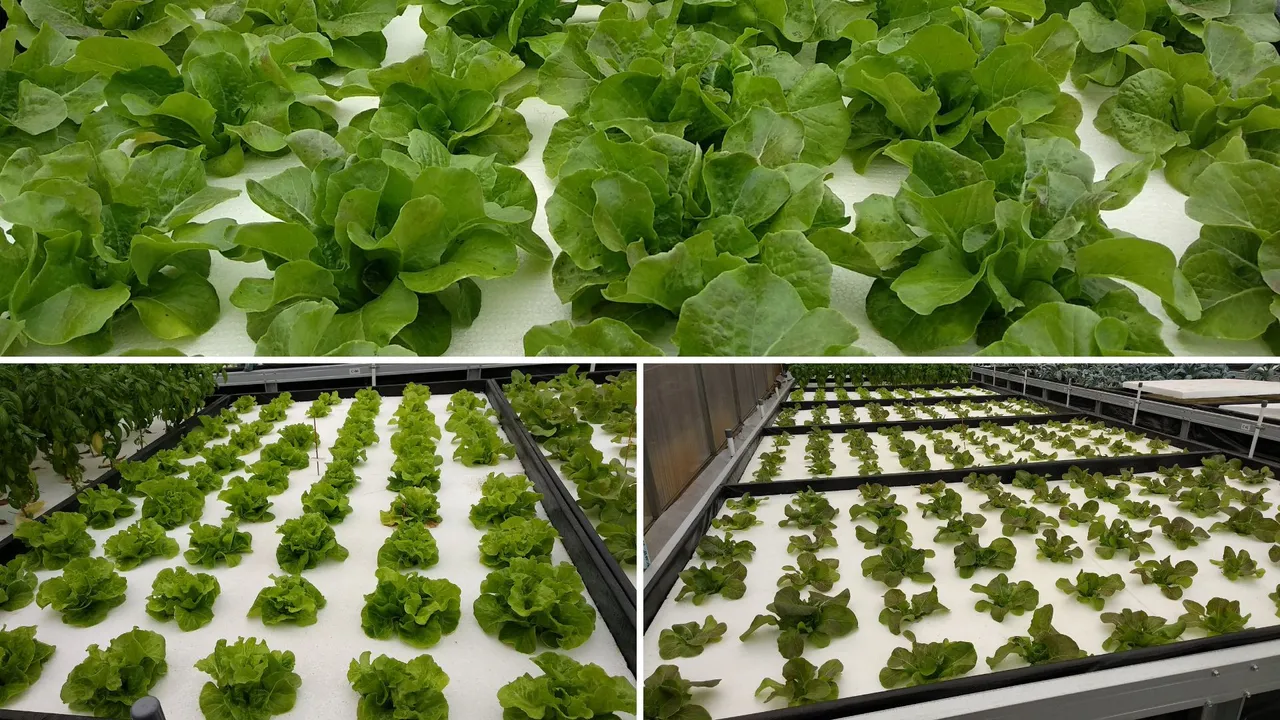
Butterhead/Bibb Lettuce
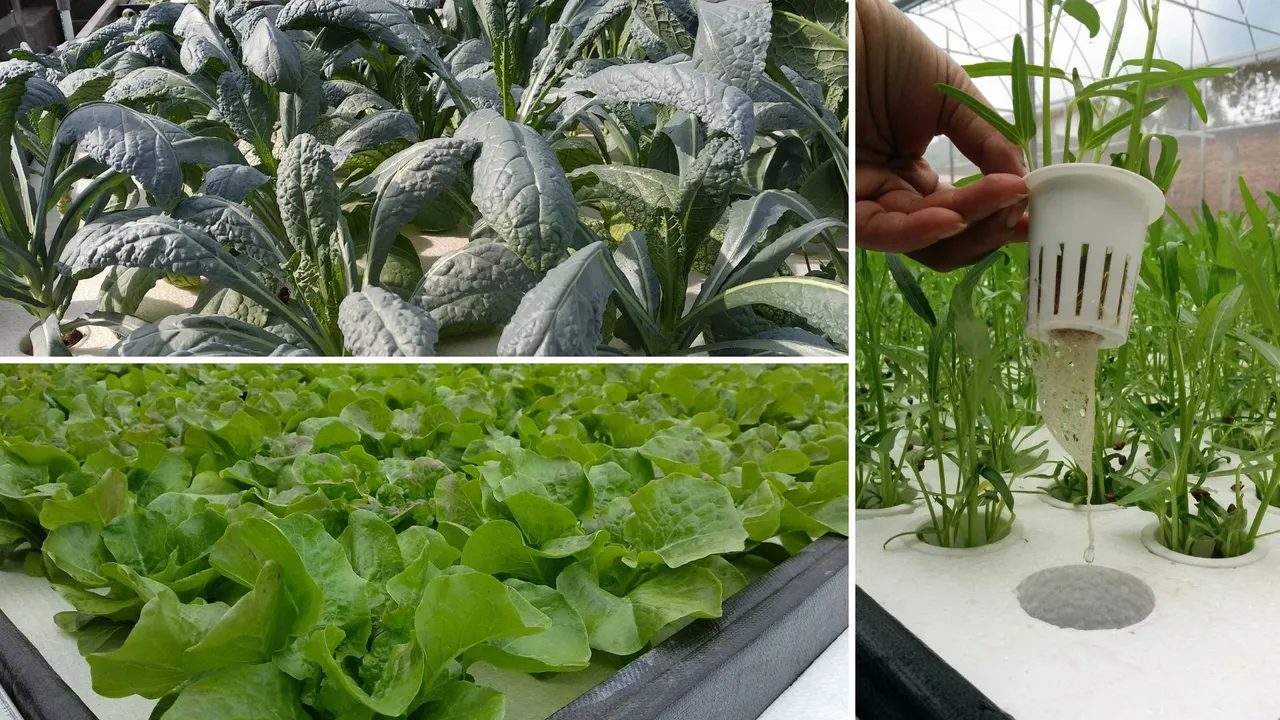
Top Left: Kale Nero di Toscana
Bottom Left: Bronze Mignonette Lettuce
Right: Kangkoong (water spinach)

Rows of basil and basil in the box ready for delivery to customer!
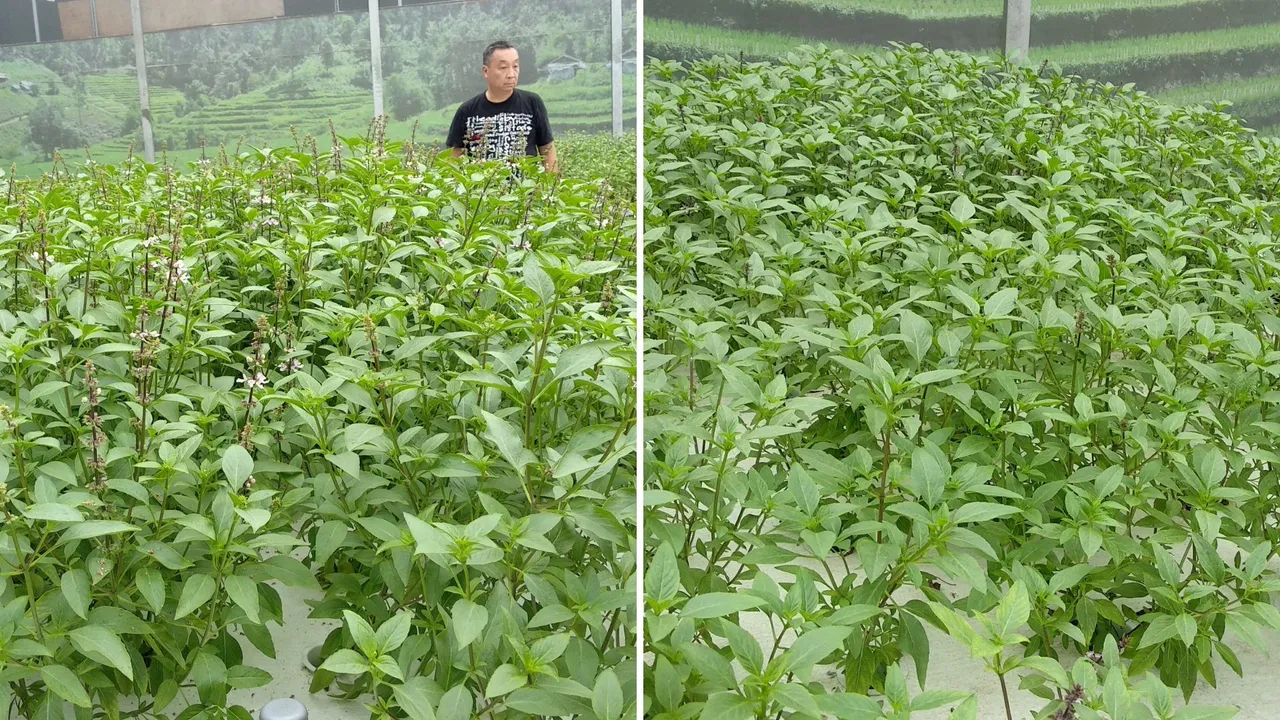
Thai Basil, supply to Thai restos.

Curly Kale – high demand for green smoothie mix.
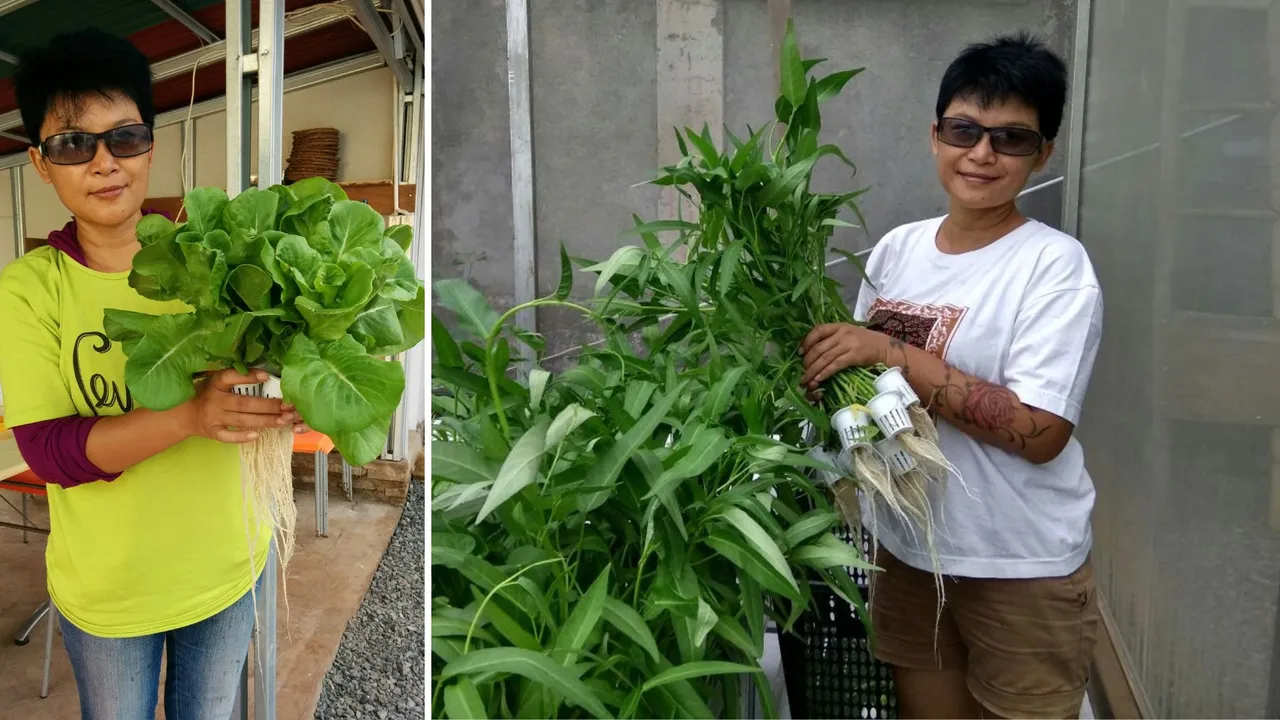
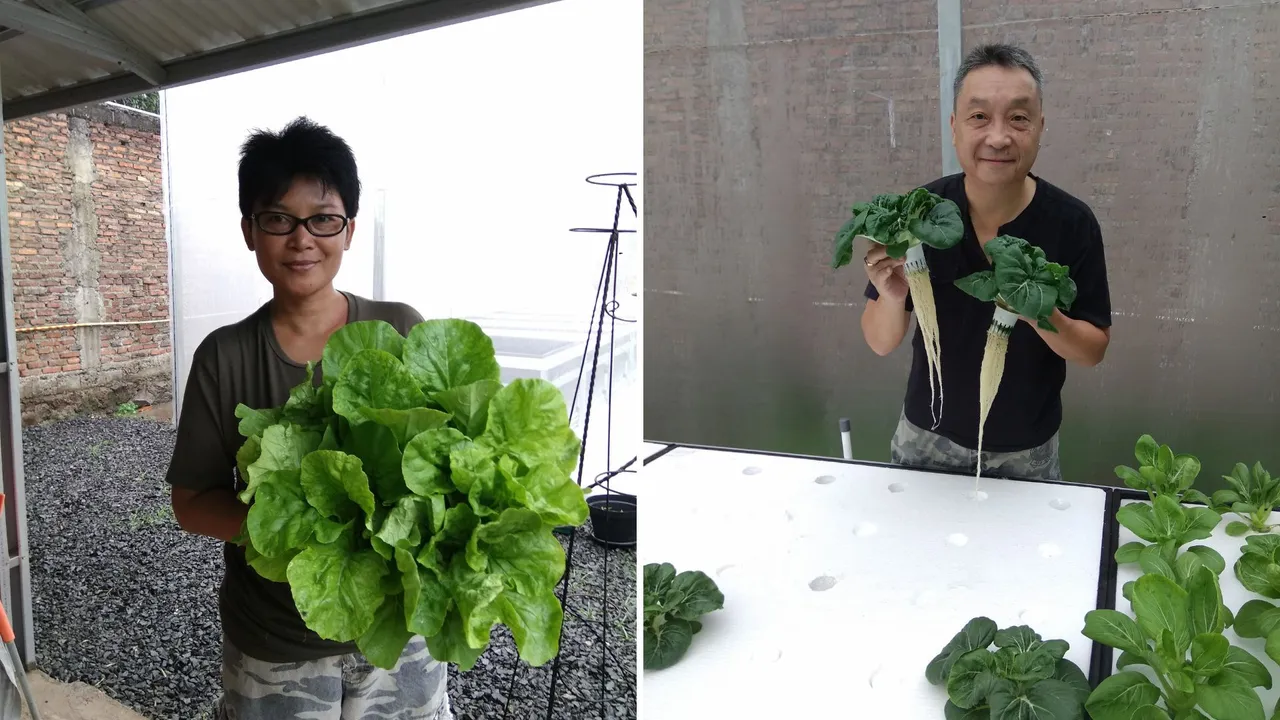

Harvest time.
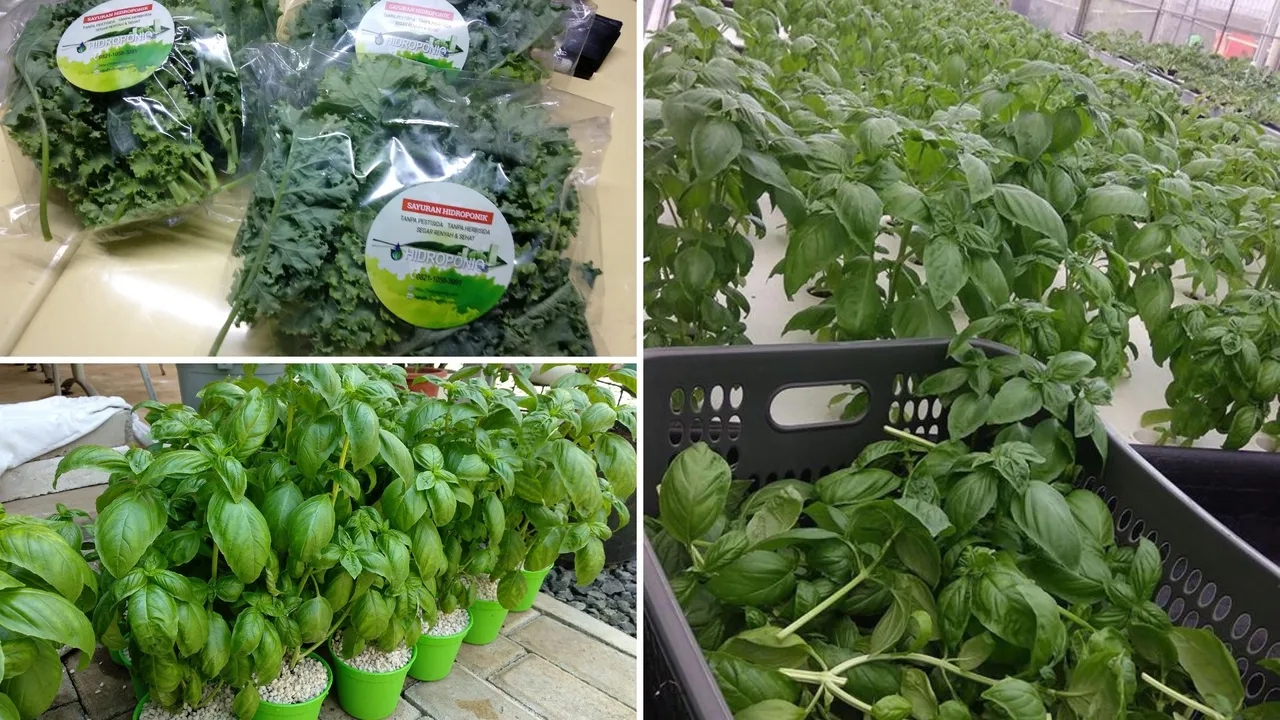
Top Left: Curly Kale in 250 gr. packaging
Bottom Left: Basil in pots.
Right: Harvesting Basil.
THE BUSINESS
Social media, especially Facebook has become our primary tool to promote our business. In the beginning, my wife was very active in hydroponics and other organic/gardening communities. This is where networking really paid off. She got to know resto and catering services owners, vegetable suppliers, hydroponics suppliers, etc. They later either become our regular clients and/or suppliers.
Our business started from selling imported seeds, customized hydroponic systems primarily for hobbyists, hydroponics supplies (import and local), and training. The greenhouse we built was a good advertisement. We received a lot of inquiries about whether we could provide fresh vegetable supplies to catering services and restaurants. This was the turning point when we decided to concentrate more on building our networks with big farmers and opened an online shop both for hydroponics supplies and fresh vegetables. What we envisioned of the business had slightly shifted and diversified to the fresh vegetable business now.
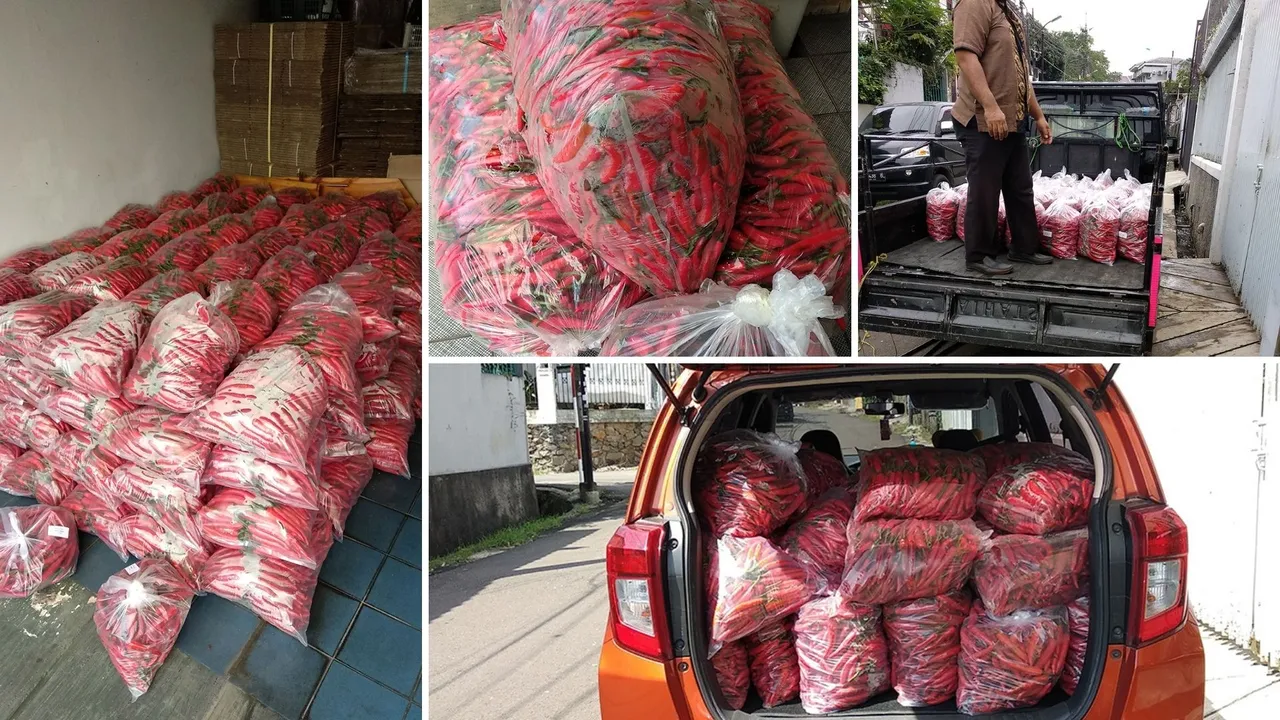
900 kg of red hot chili repacked and ready to ship to multiple destinations.

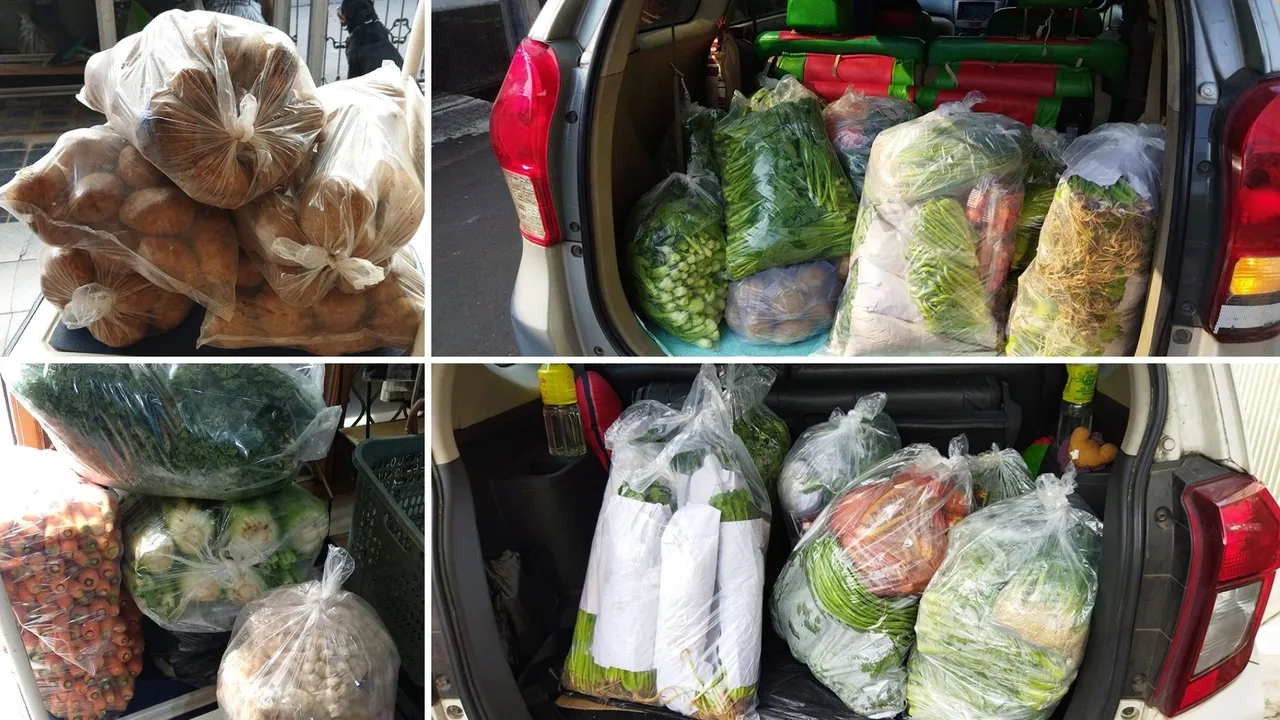
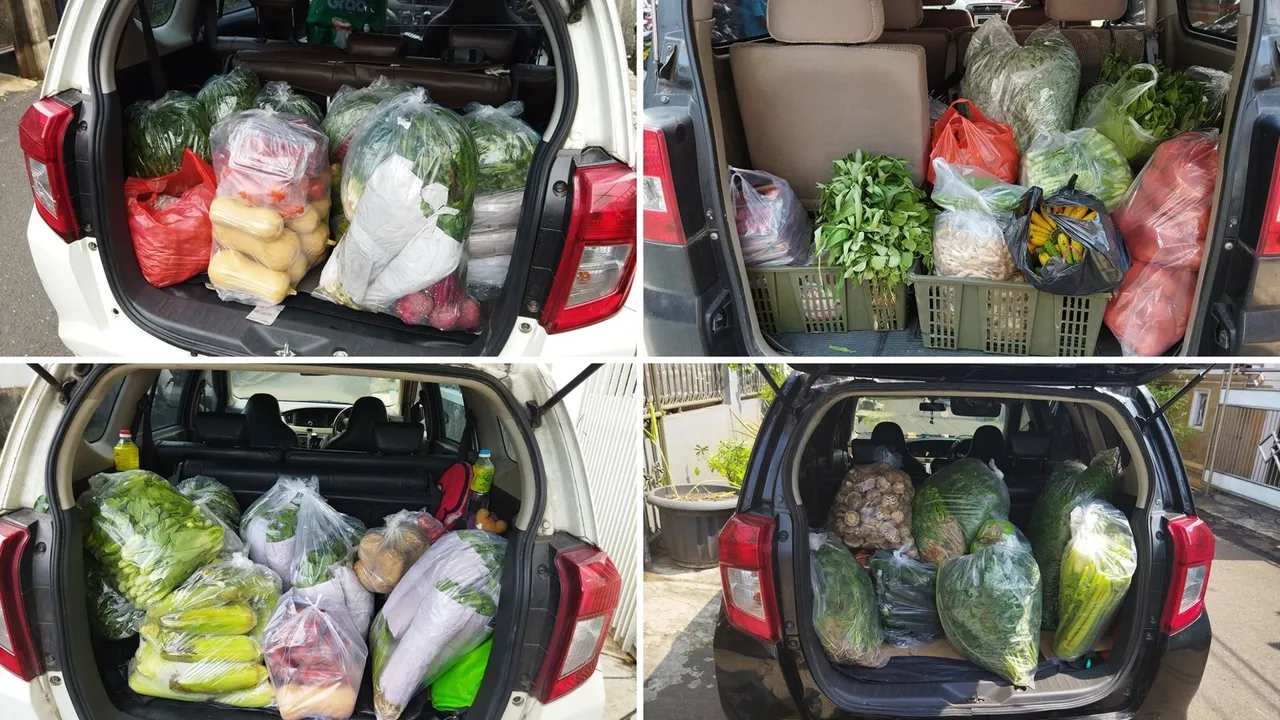
Morning delivery madness and repacking according to client's orders.
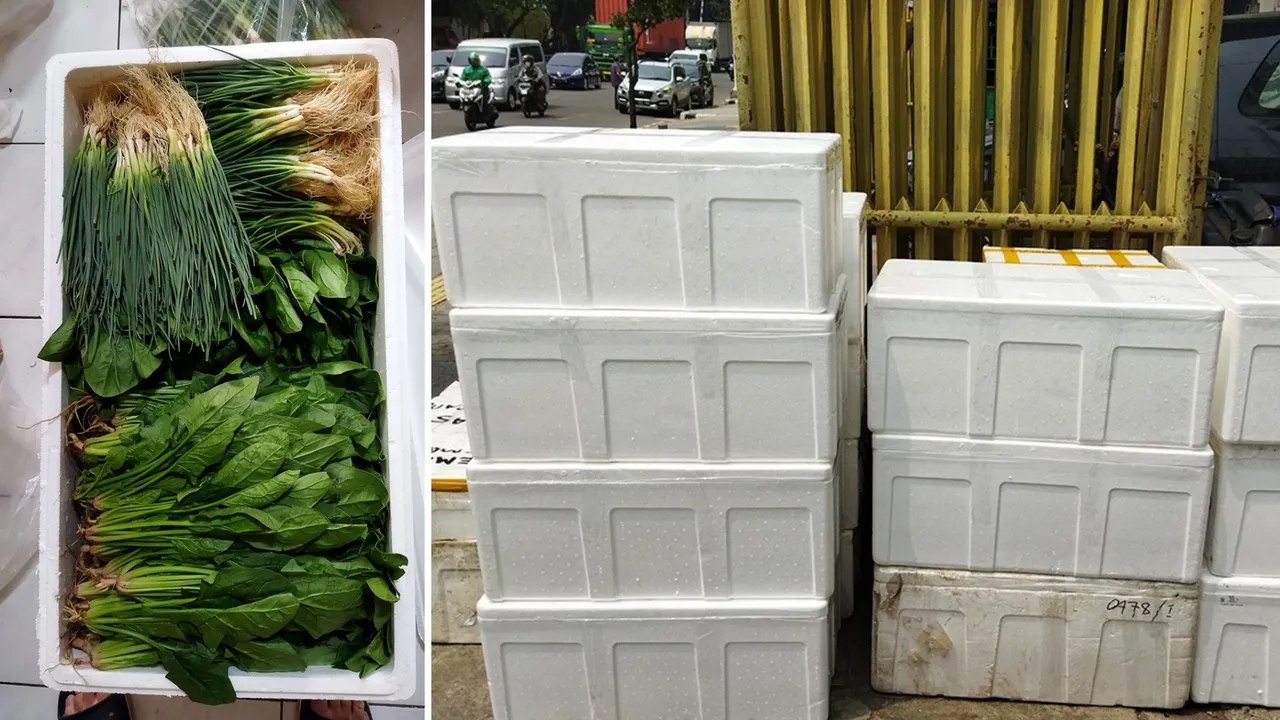
Orders came from a hotel for a wedding reception. The hotel location is in a city on another island, about 540 km from Jakarta. Overnight transport by shuttle bus.
Business has been good so far. Slowly but surely we see an increase in revenue. The online vegetable business requires us to start very early in the morning. We have to wake up at 5:00 am to receive vegetable delivery from our partners. We then sort and pack those vegetables according to yesterday's orders. By 7:00 we start ordering online motorbike or car couriers (similar to Uber) to deliver orders. We spent less and less time maintaining the greenhouse due to lack of time. In July 2019 we decided to stop the greenhouse operation and concentrate more on the fresh vegetable business. We opened another online shop and in 2020 the Pandemic happened. The vegetable delivery business boomed!
BEHIND THE SCENE
We had a total of 47 grow beds. Three grow beds with 256 grow holes on each bed are designated for the germination process for about 7-10 days. After that, we move the seedlings to the bigger grow beds with fewer grow holes (60 holes on each bed) filled with a higher concentration of nutrients solvent. We let them grow for another week or so before we top up the water with stronger nutrients. The bigger the plants grow, the more nutrients they need, just like a human.

The tool and process of making grow holes on 5 cm thick styrofoam that will be placed afloat on the grow beds filled with nutrients in a water solvent. Imagine how many holes I had to punch manually... thousands!
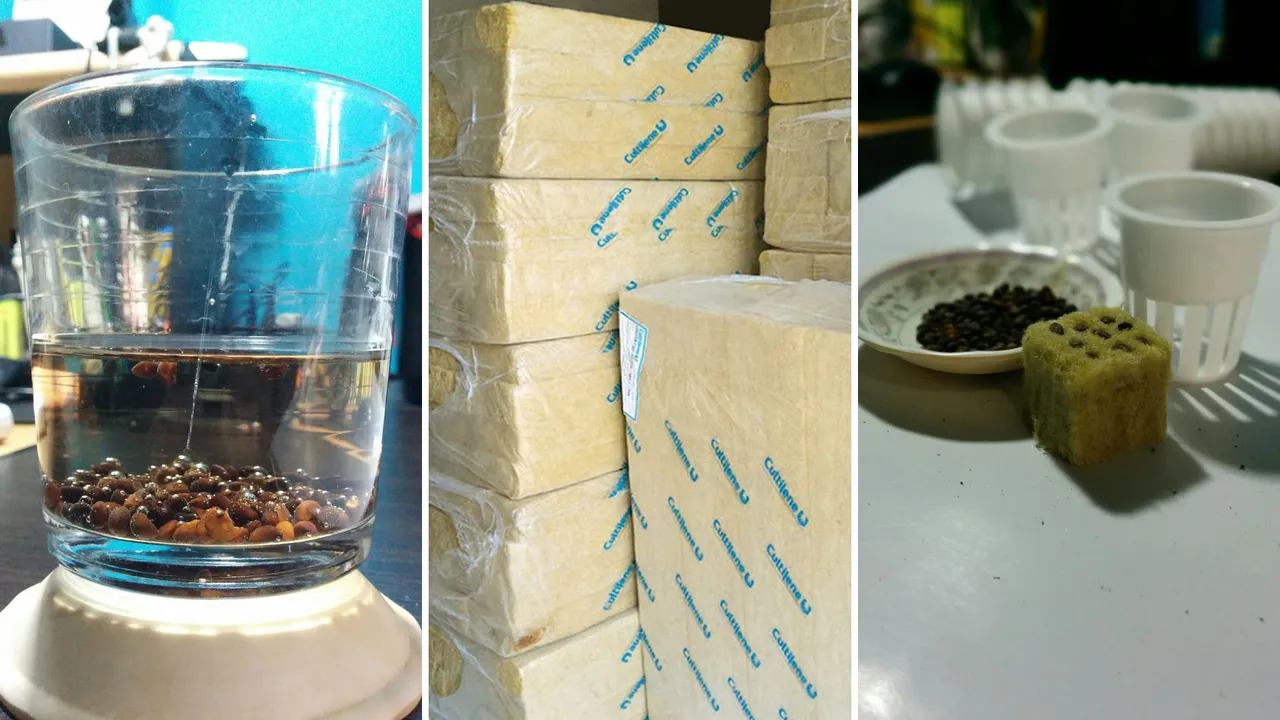
Left: The selection process of kangkoong seeds in a glass of water. Plant the ones that sink.
Middle: Rockwool as grow media.
Right: Placing good seeds in the Rockwool ready for germination.
CONCLUSION
With the advent of social media, turning your hobby into business is easier than ever before. It helped us tremendously and played an important part in boosting our business. Having an online shop and a good client testimonial about your product is paramount to your success. Your online reputation would attract more clients automatically. We're very grateful that during the pandemic not only we can sustain our business but also thrive at the same time. Perfect timing!
I hope this article could inspire others who has similar passion/hobby. In business, tenacity and patience are also keys to success. Don't give up easily. Thank you for your support. Hive on!
All images in this post are created by me (@rebolegi), otherwise it will be specified. You can also support me using this link: [https://buymeberries.com/@rebolegi](https://buymeberries.com/@rebolegi) or click the image below. 🙂

